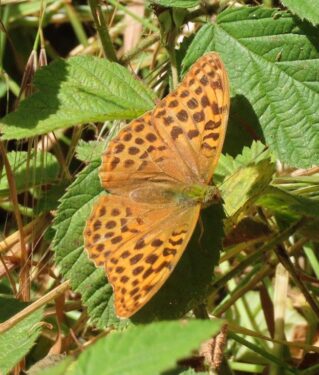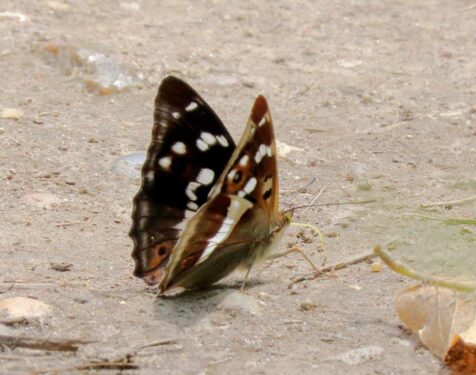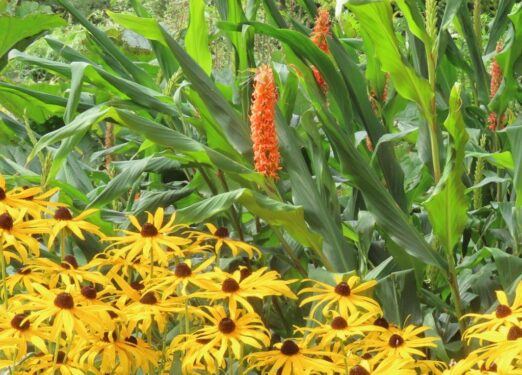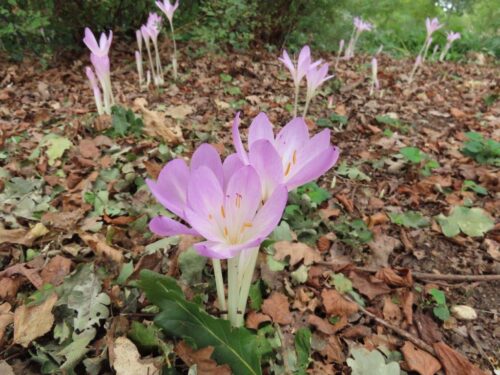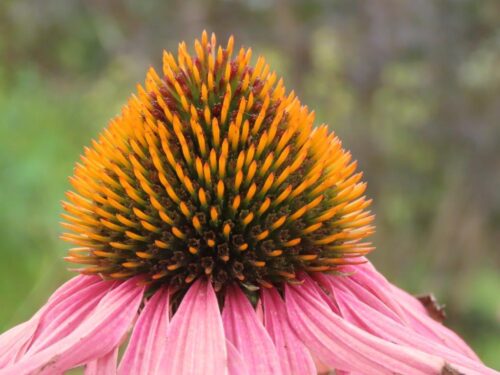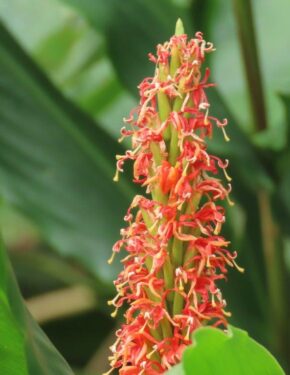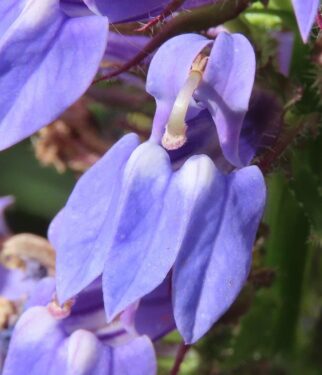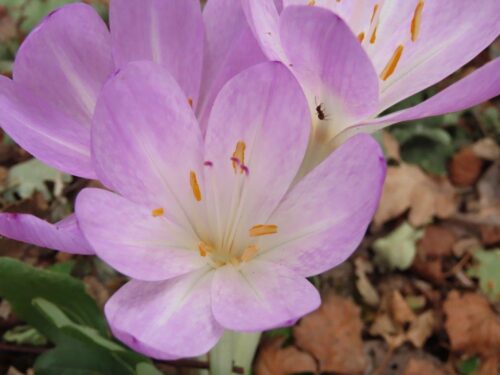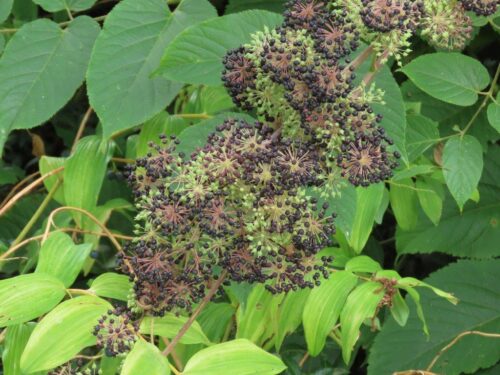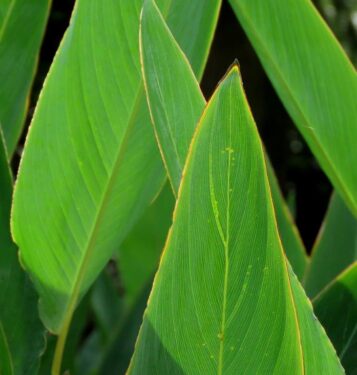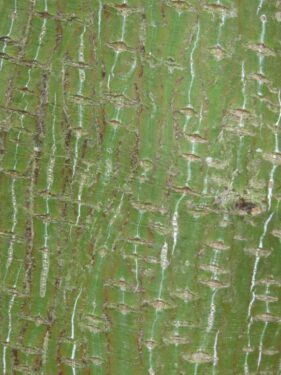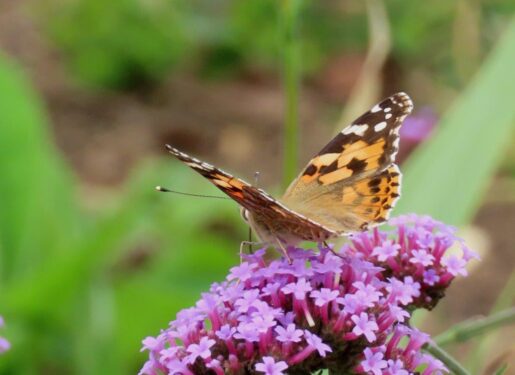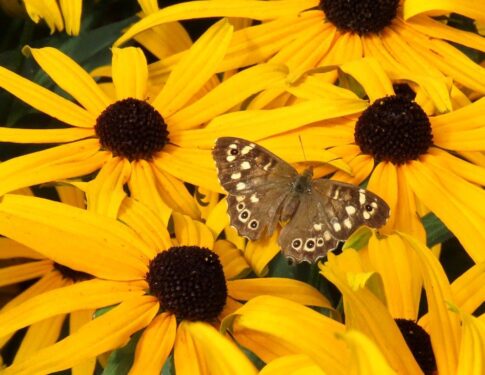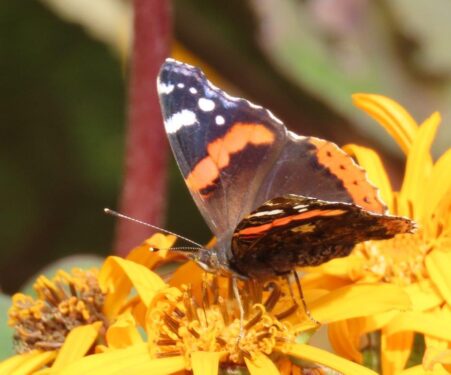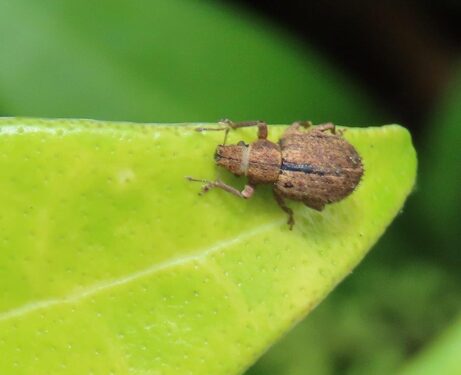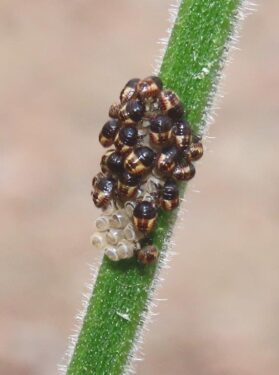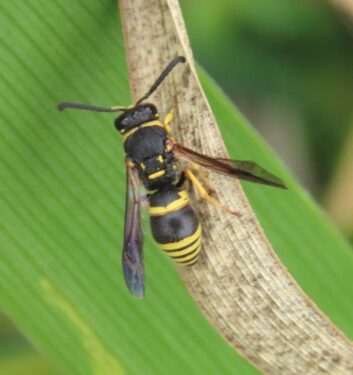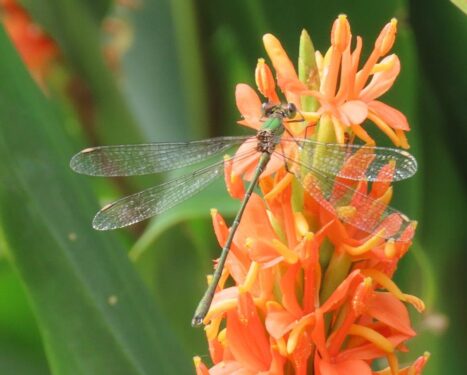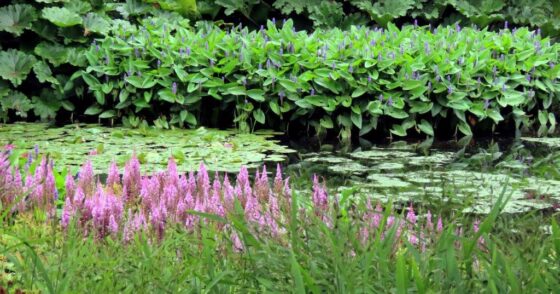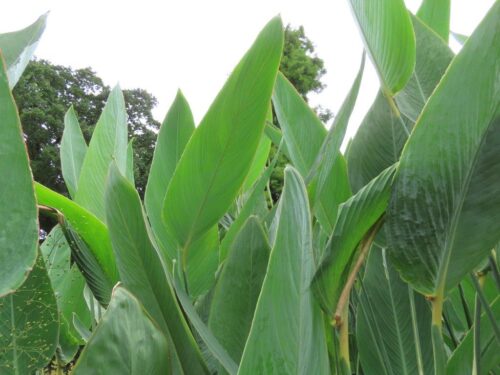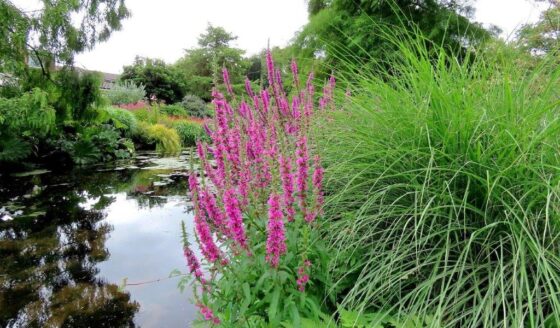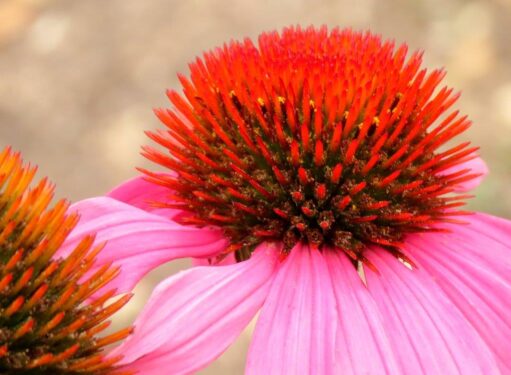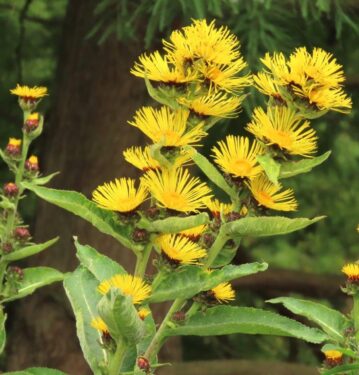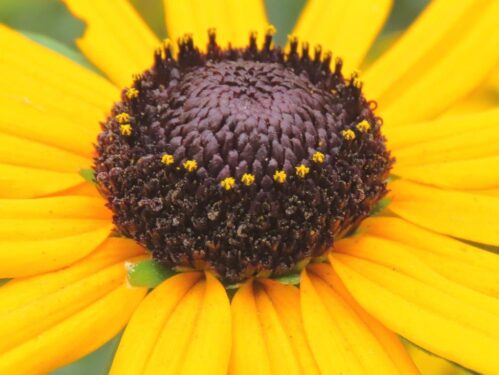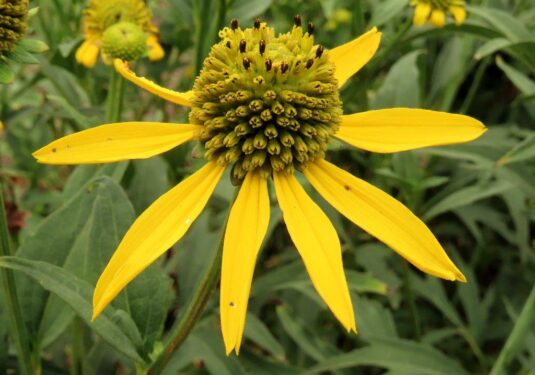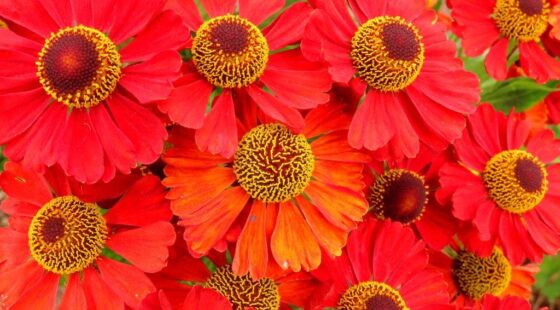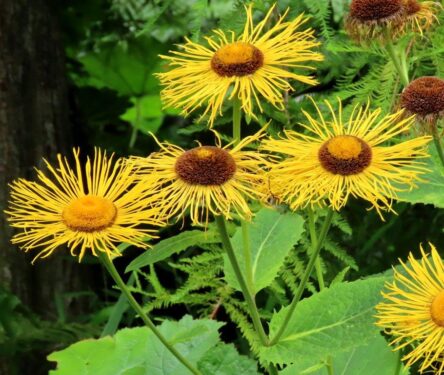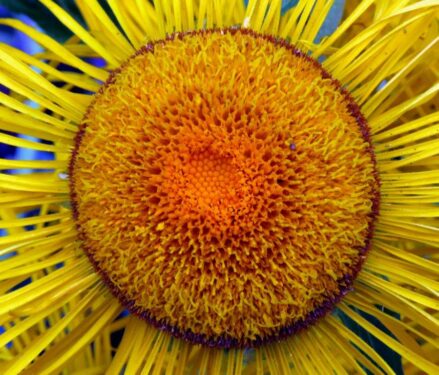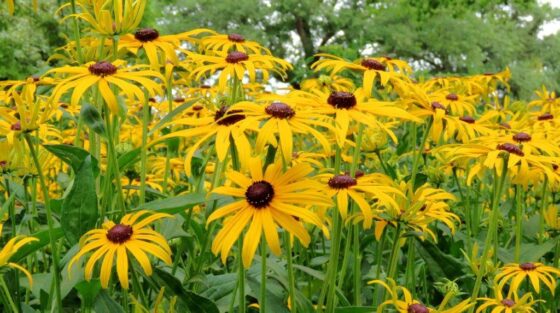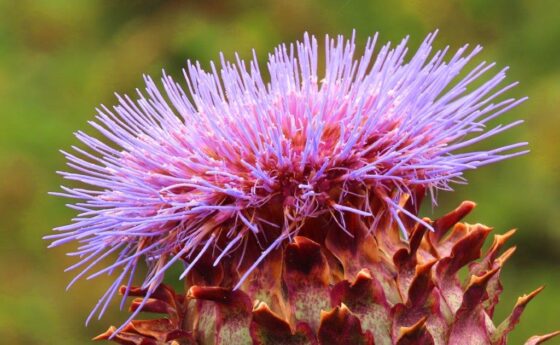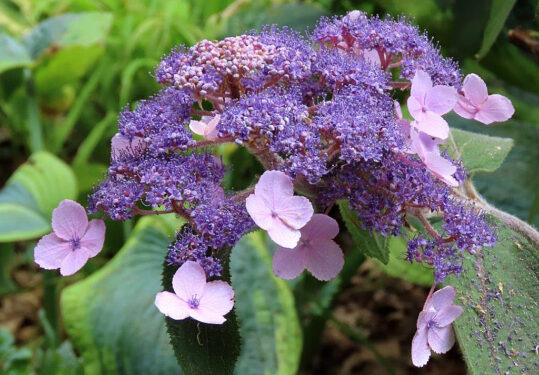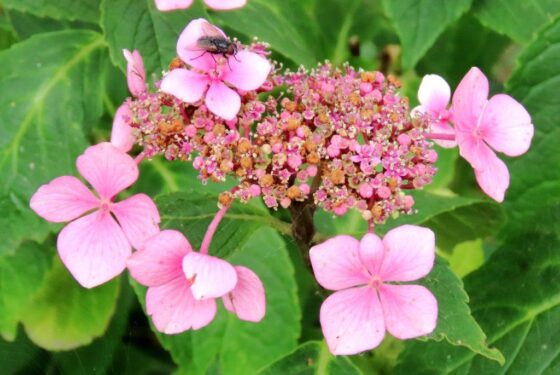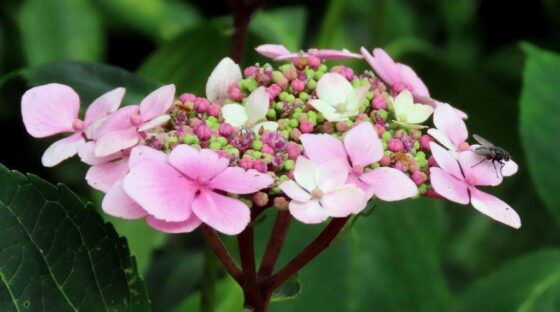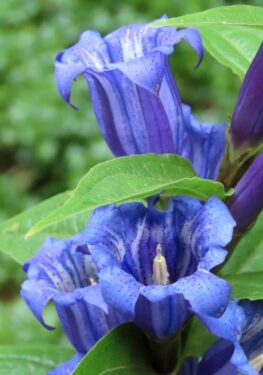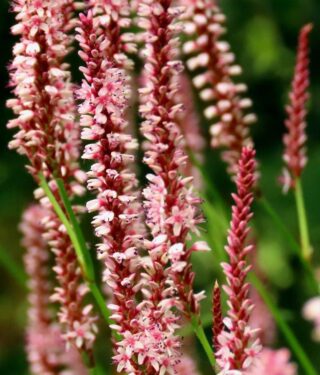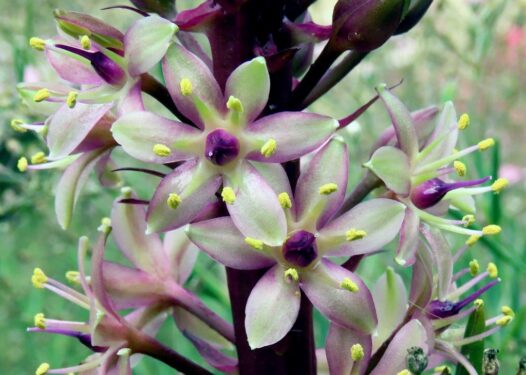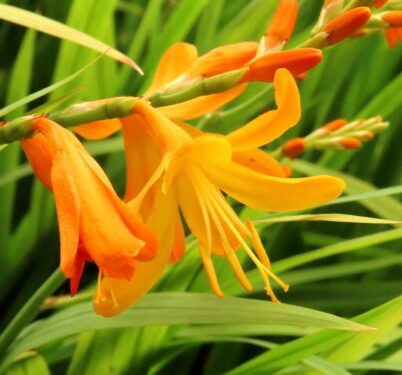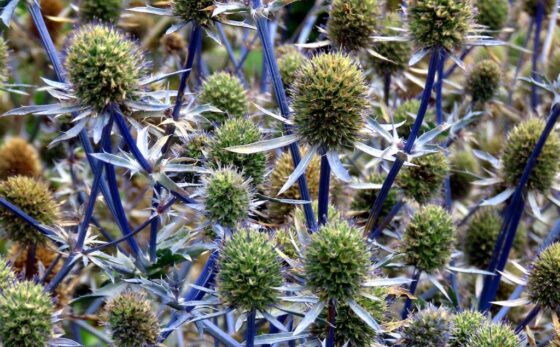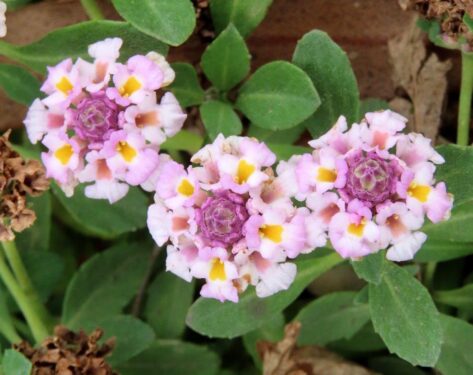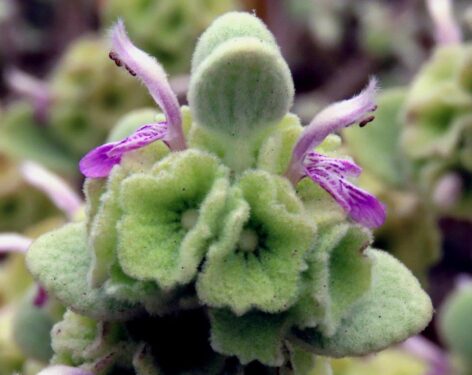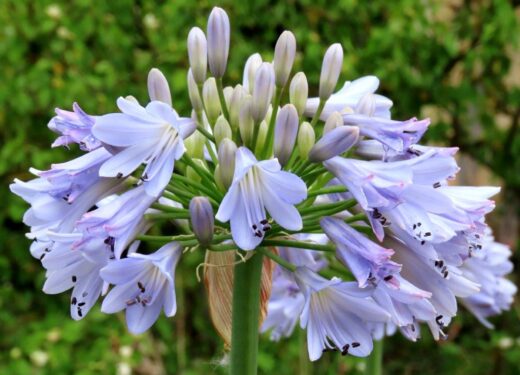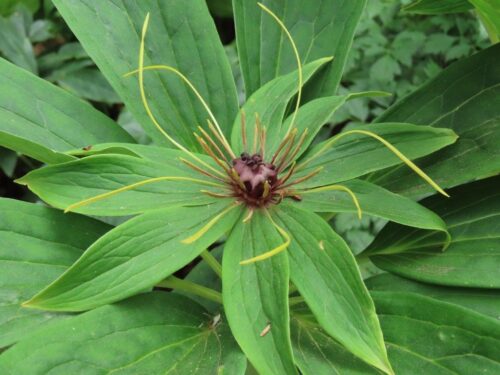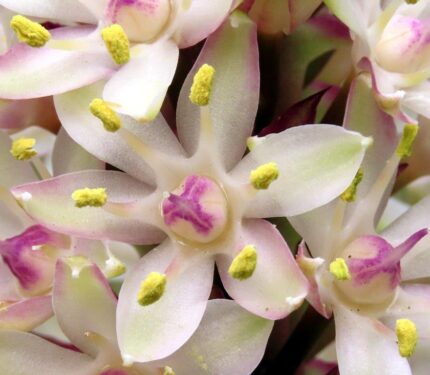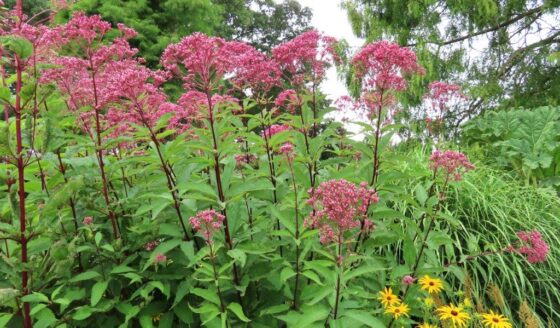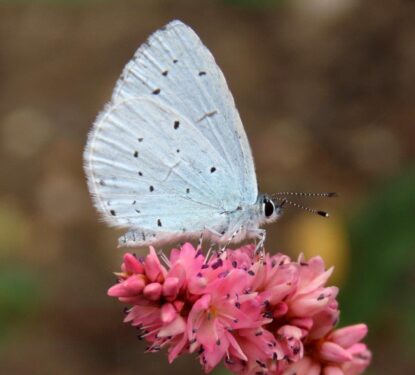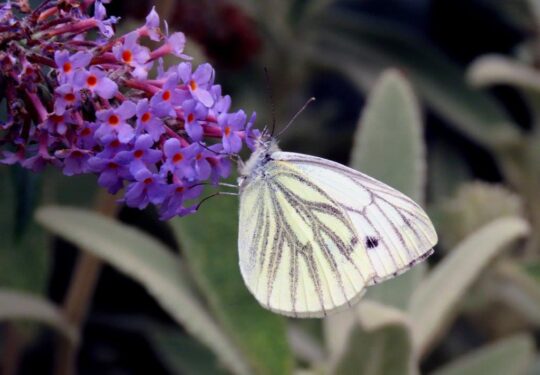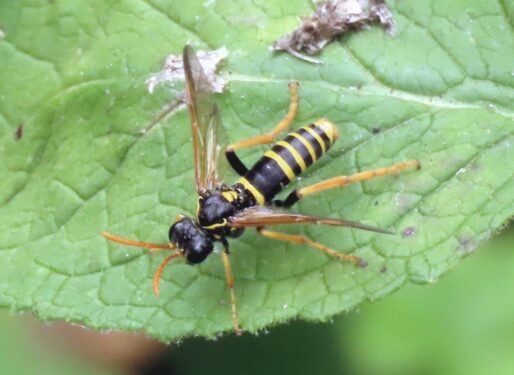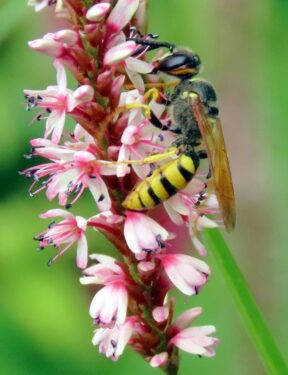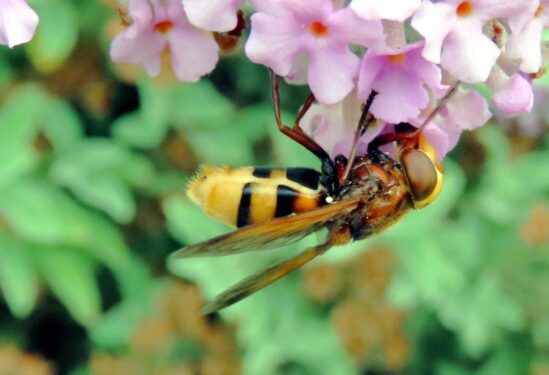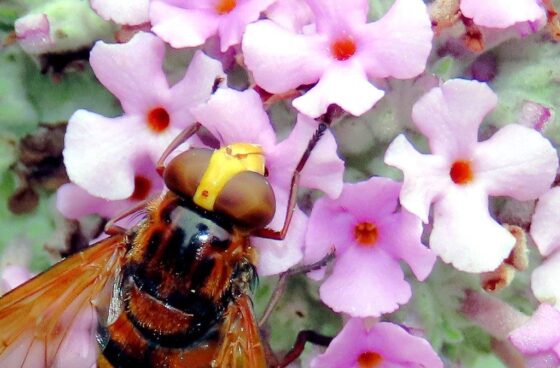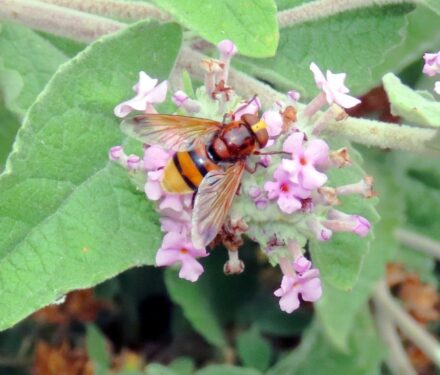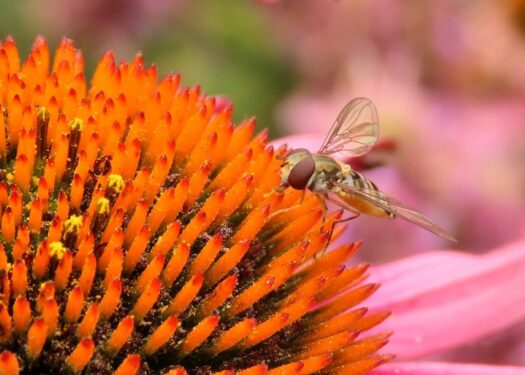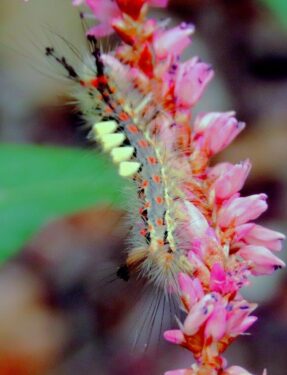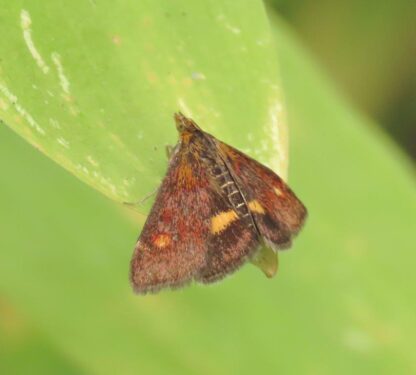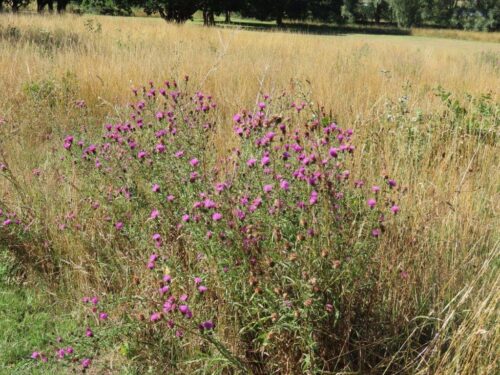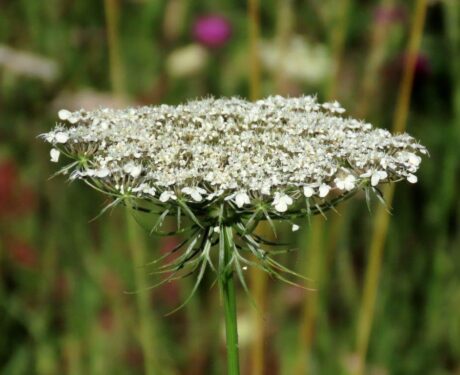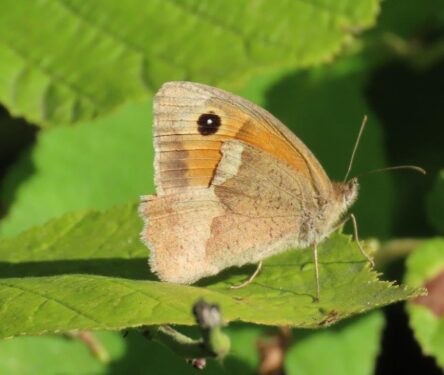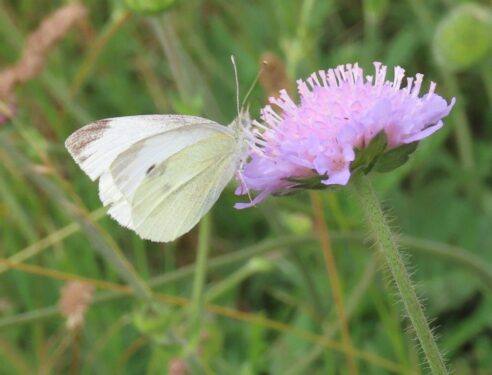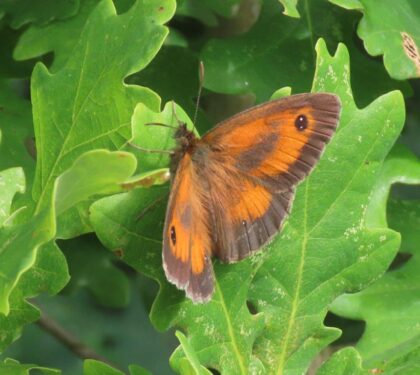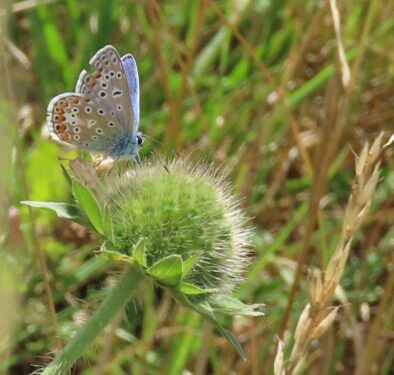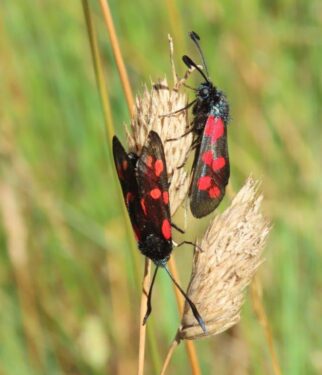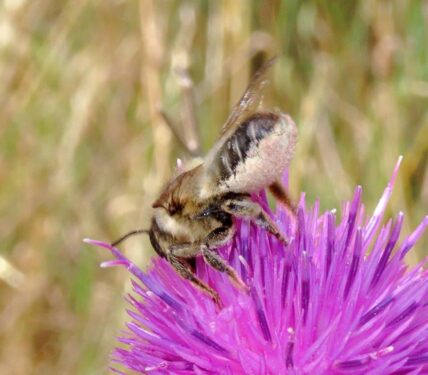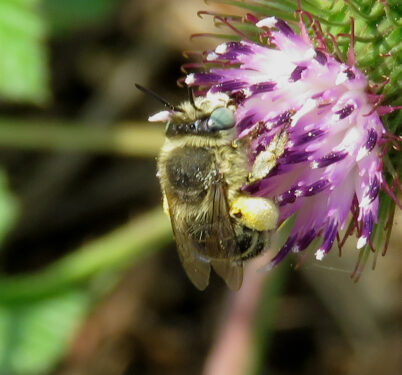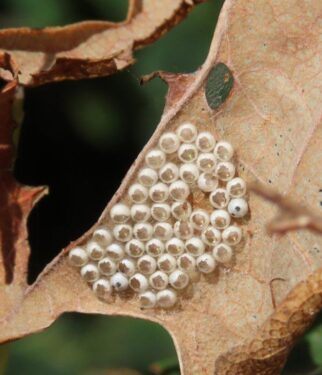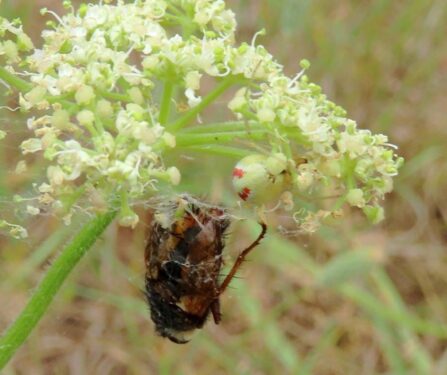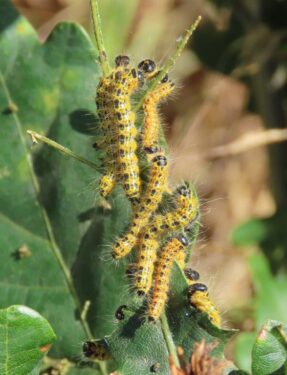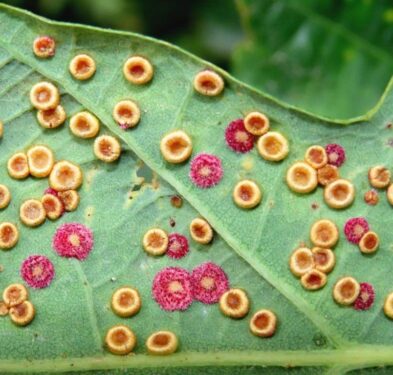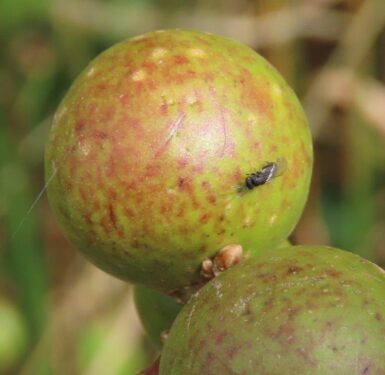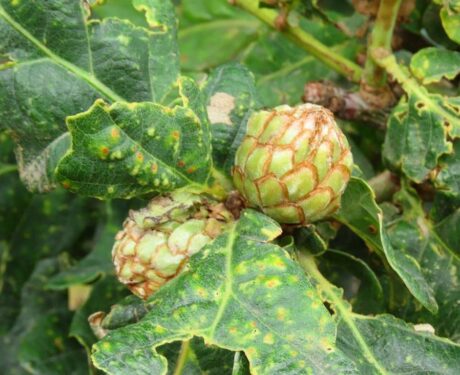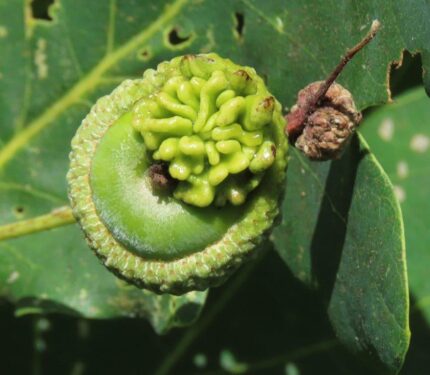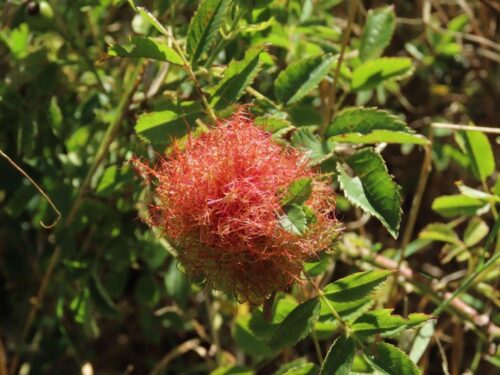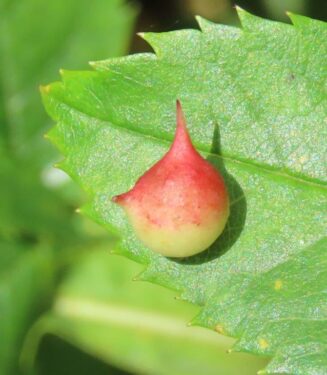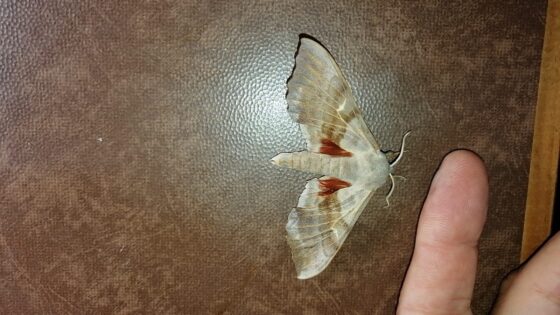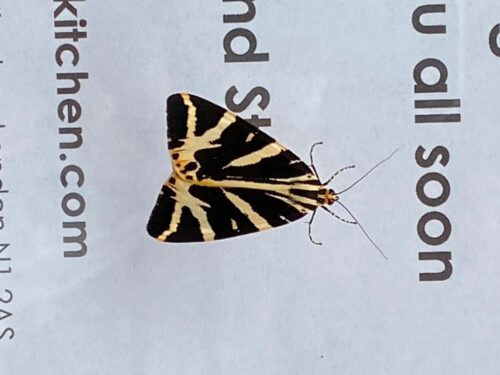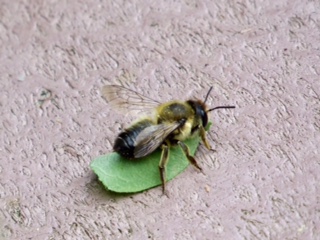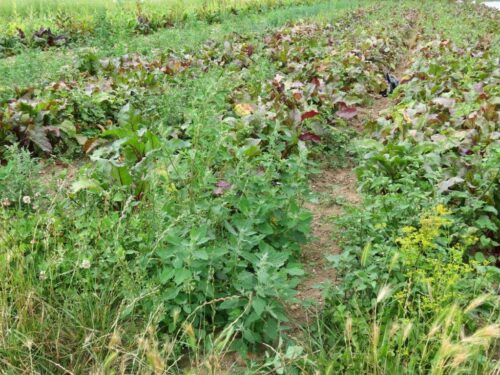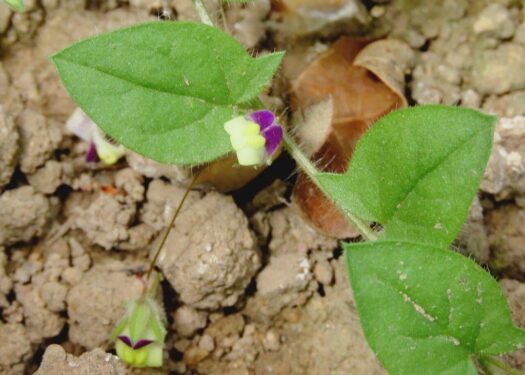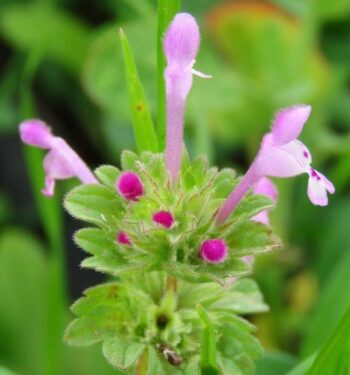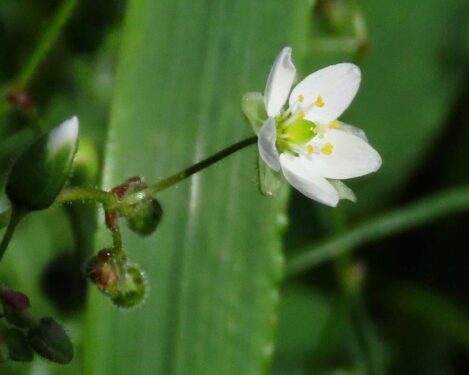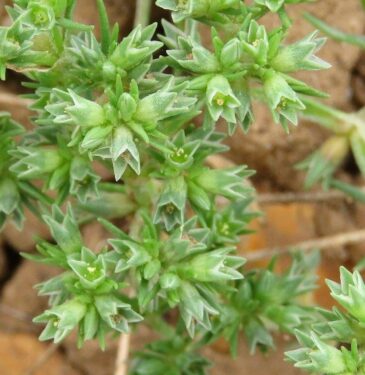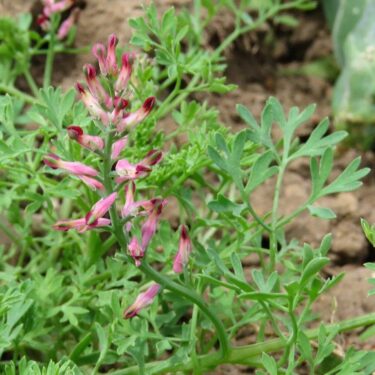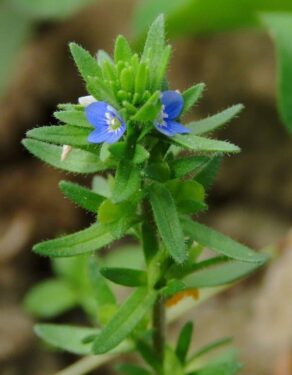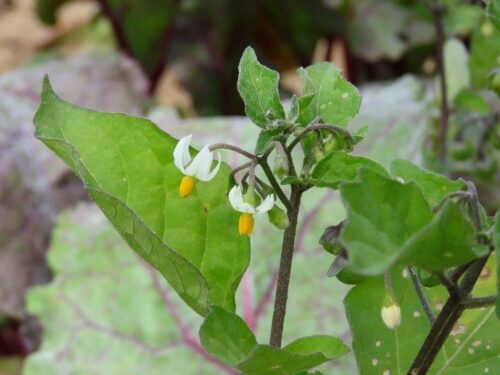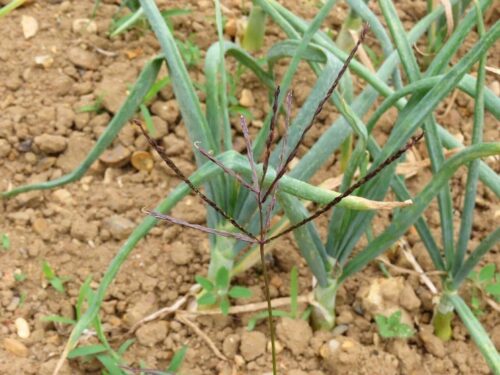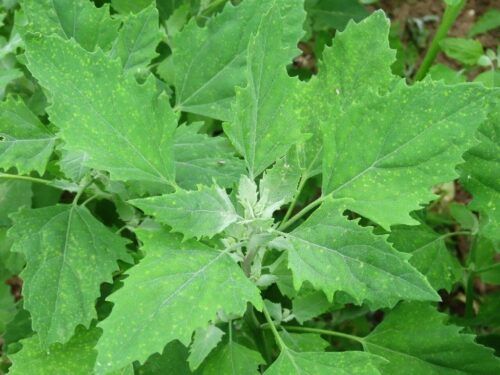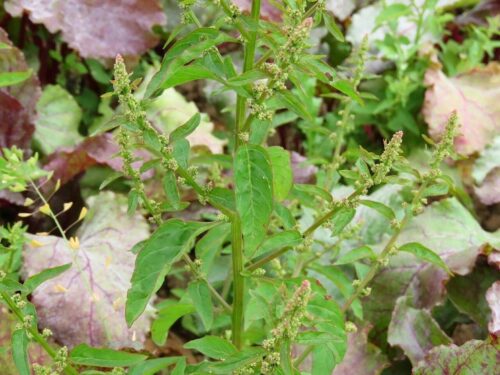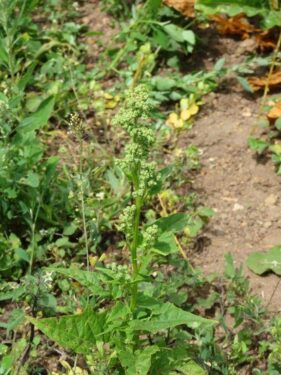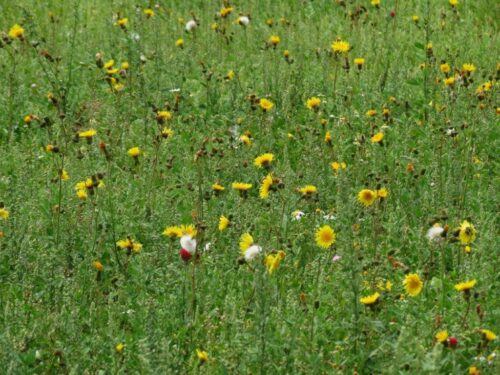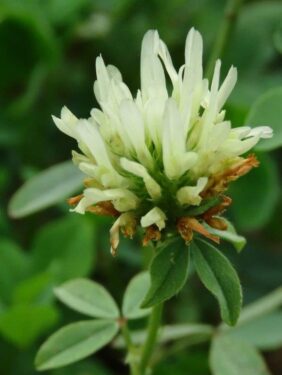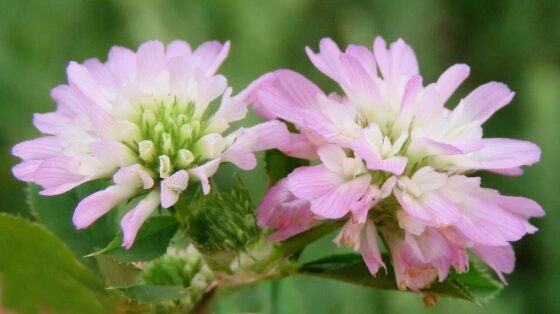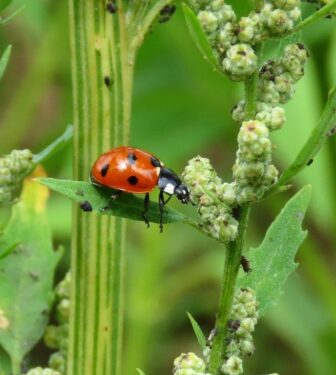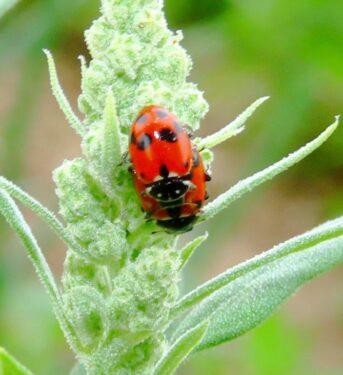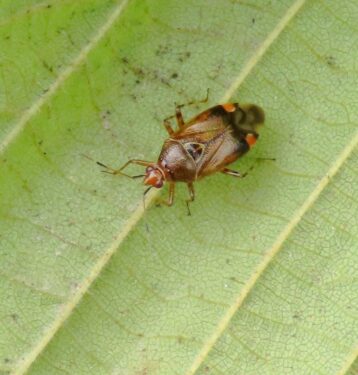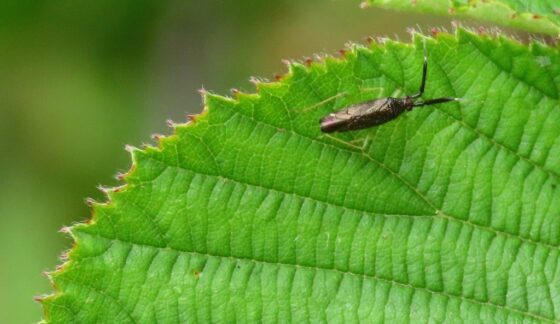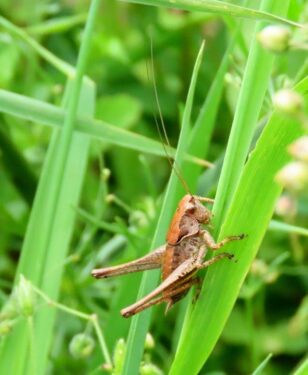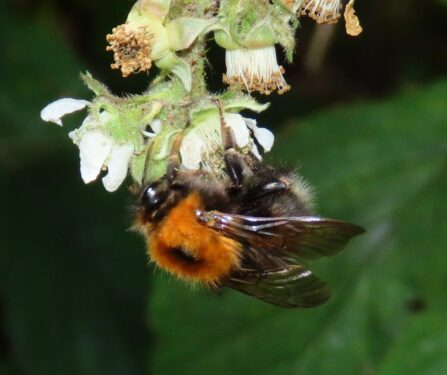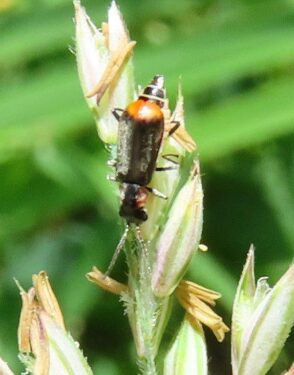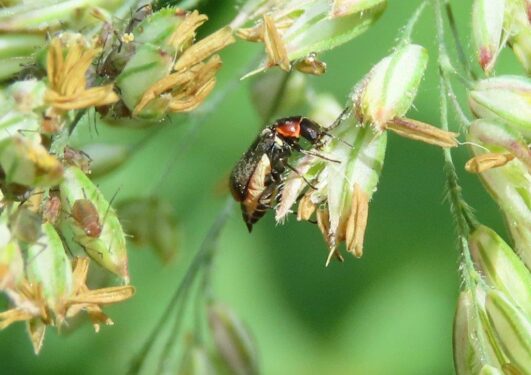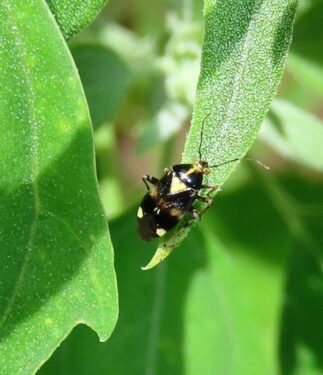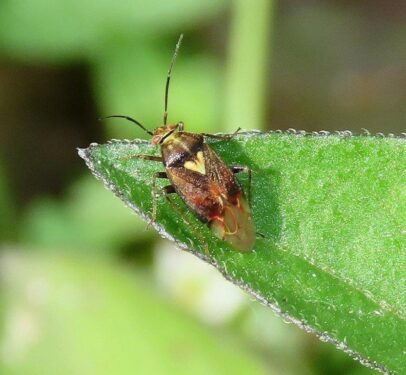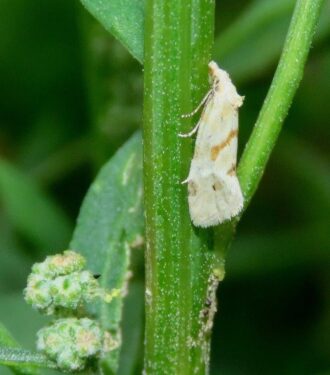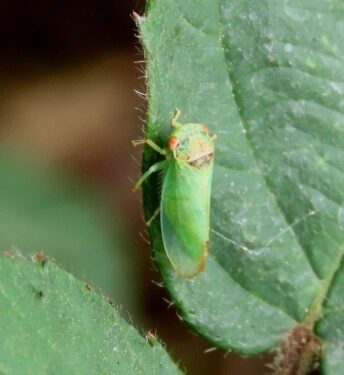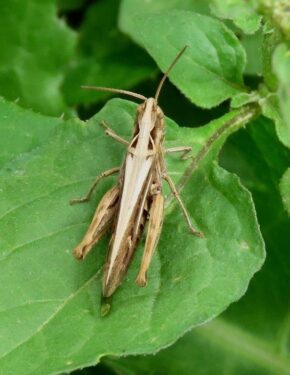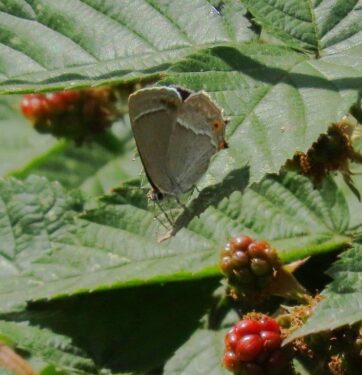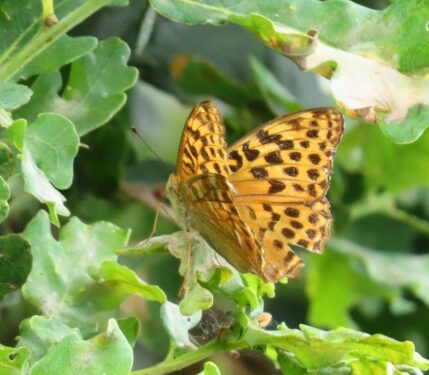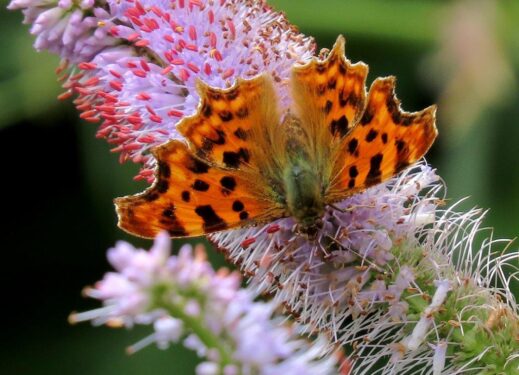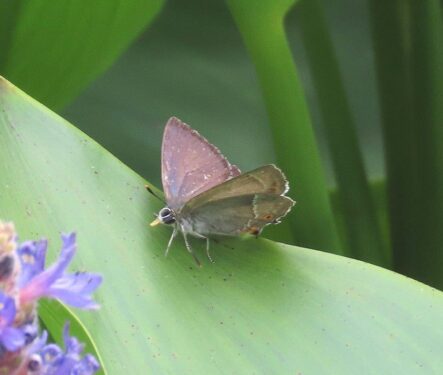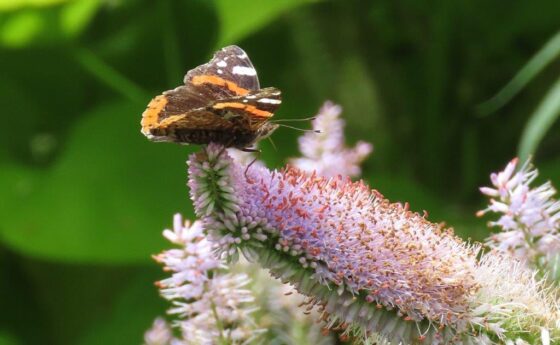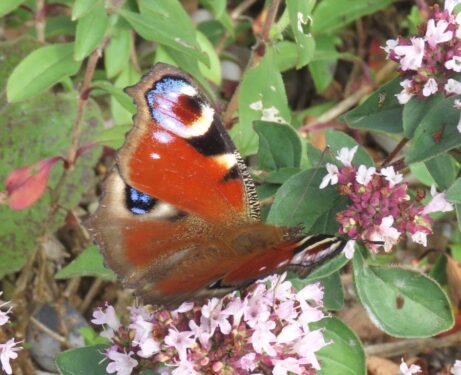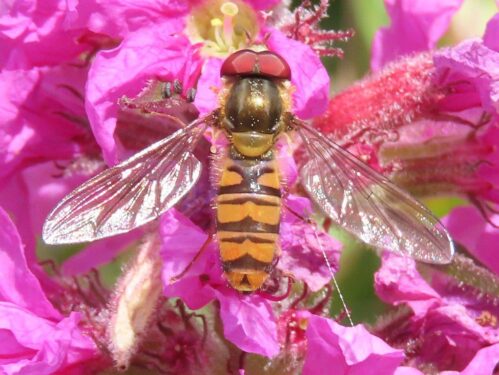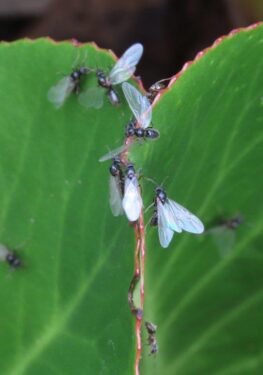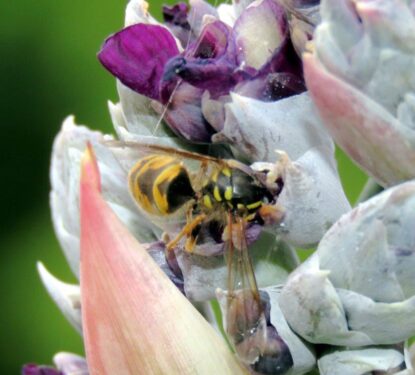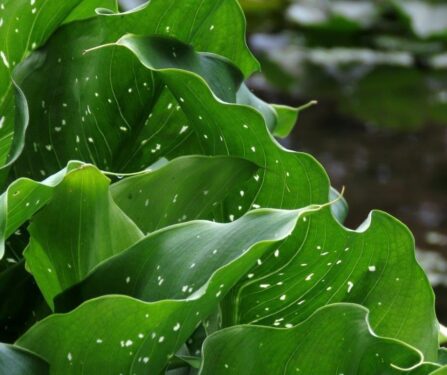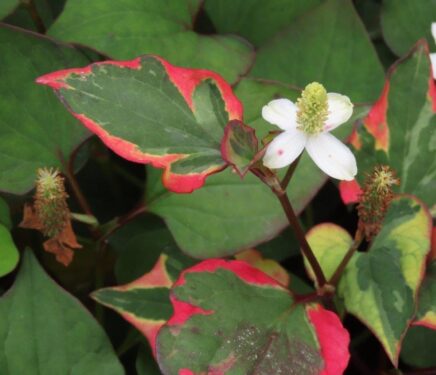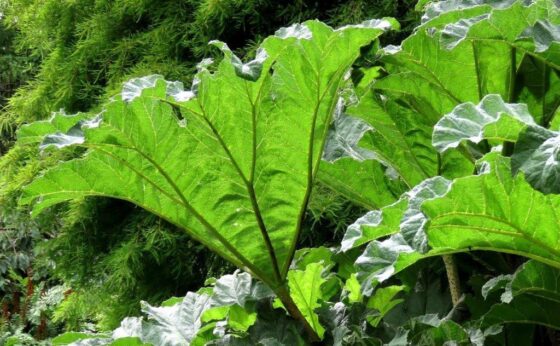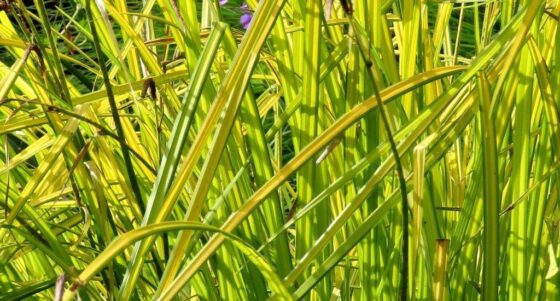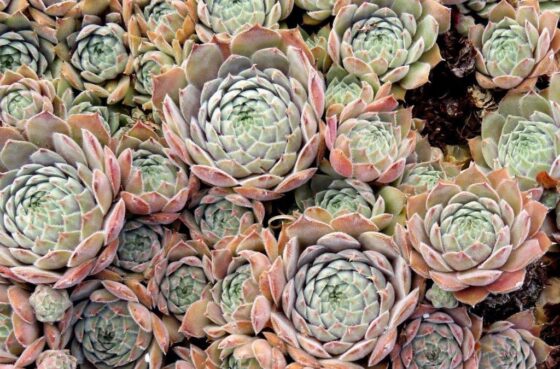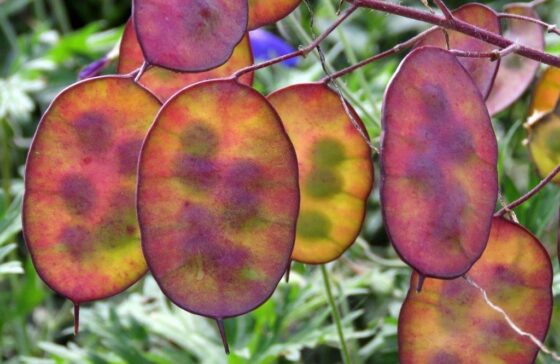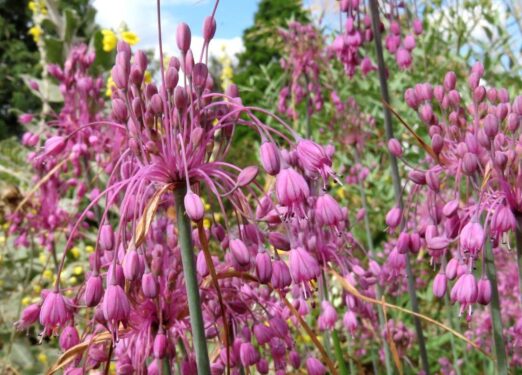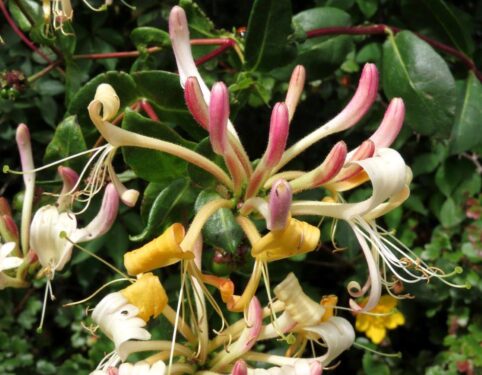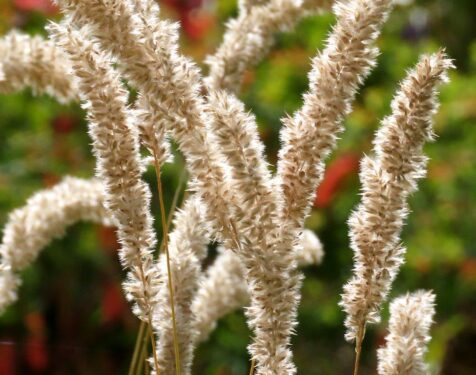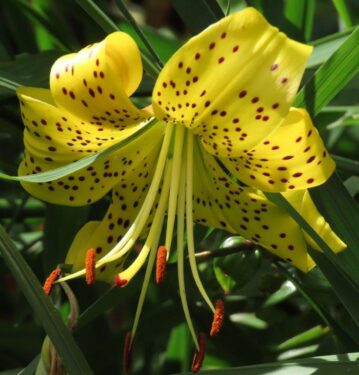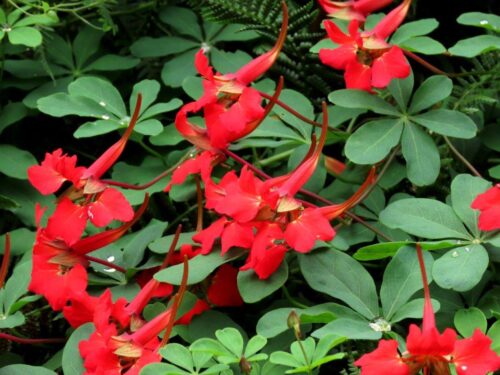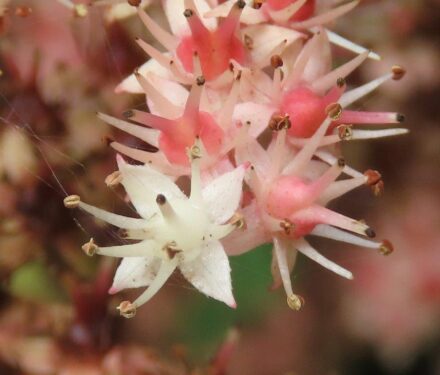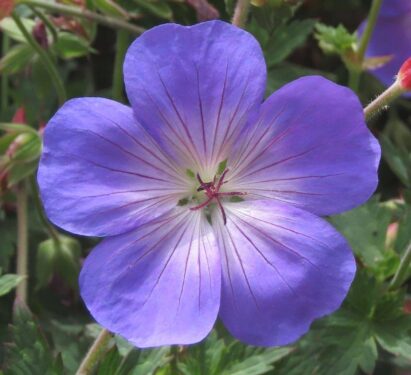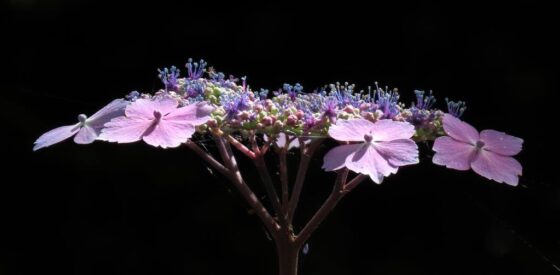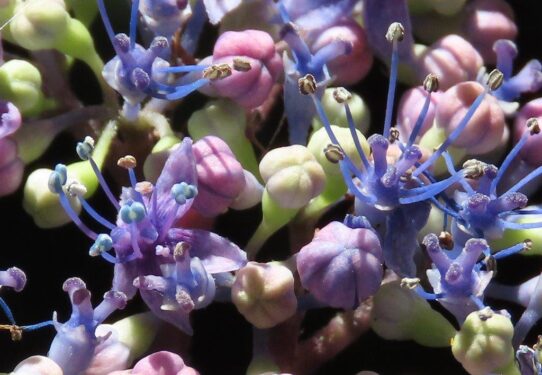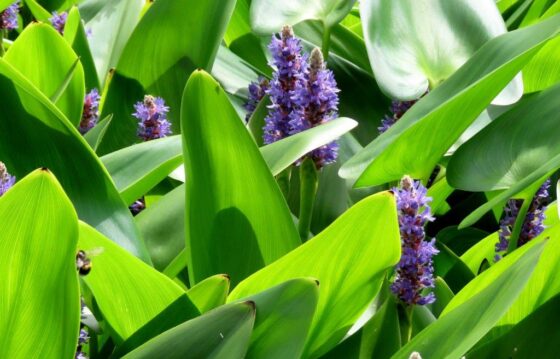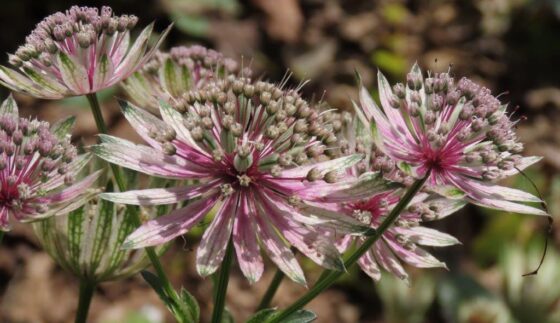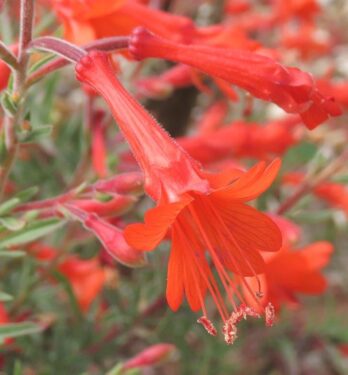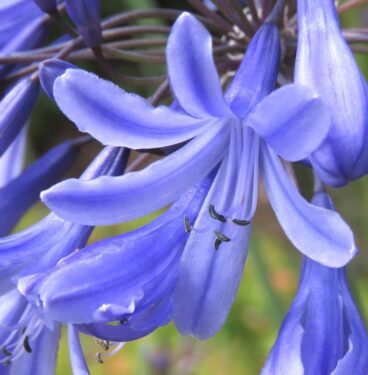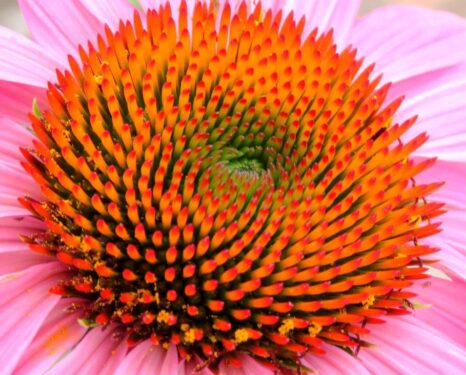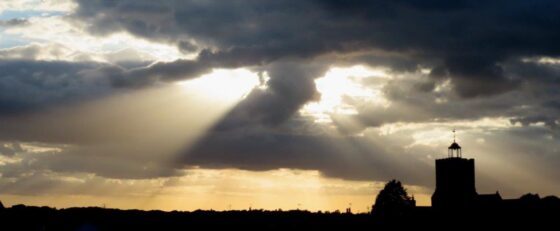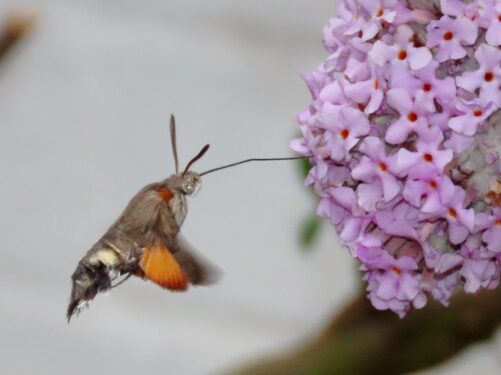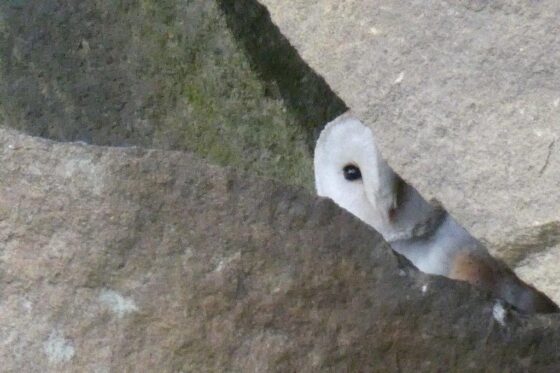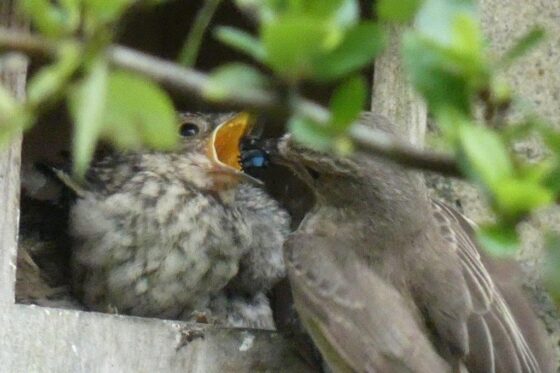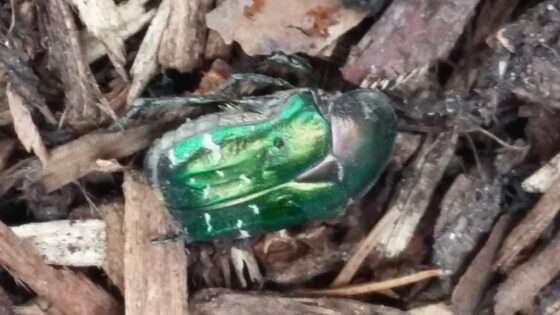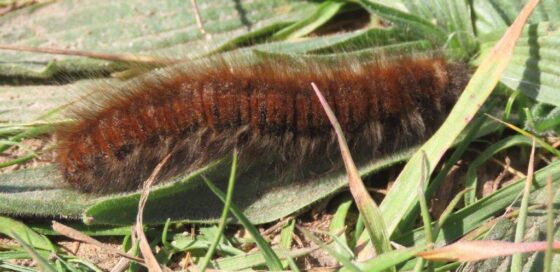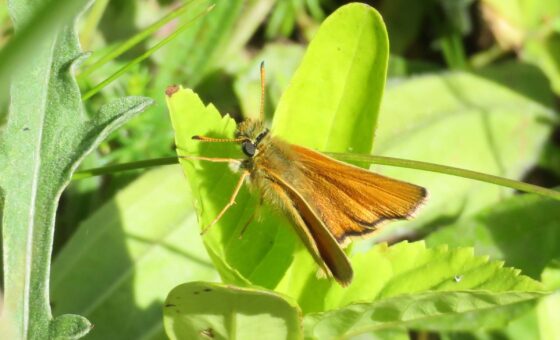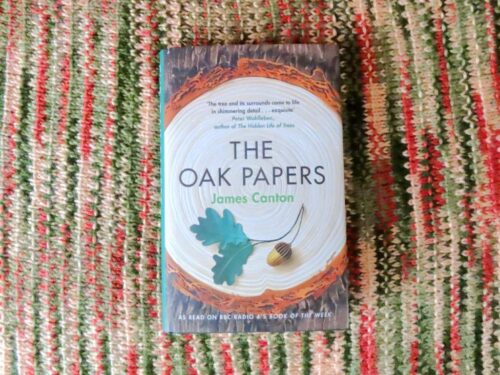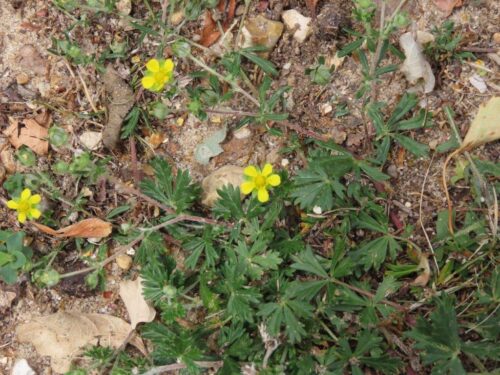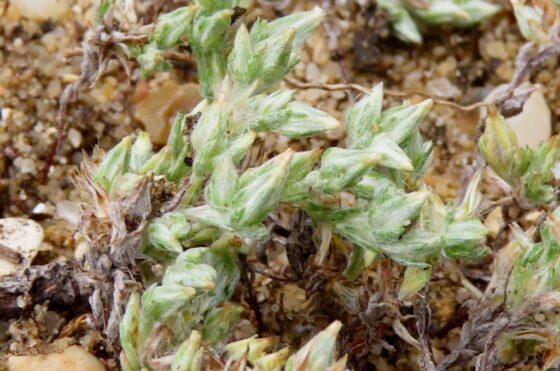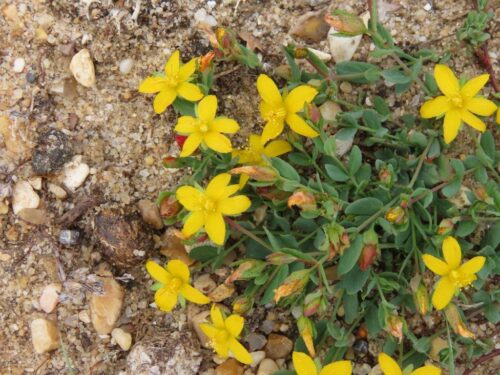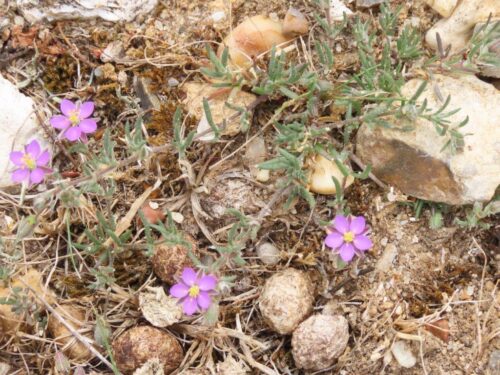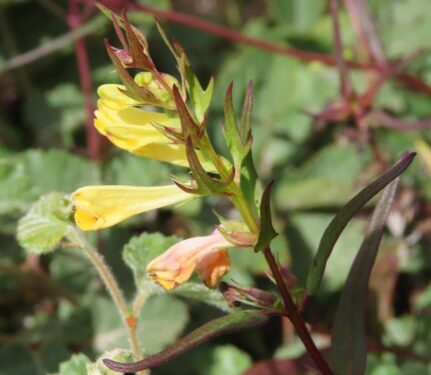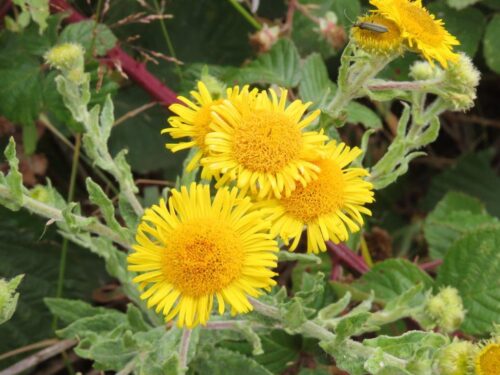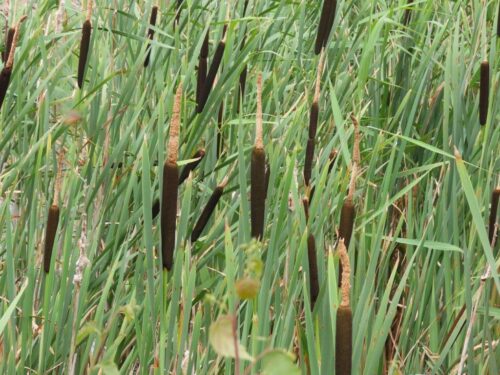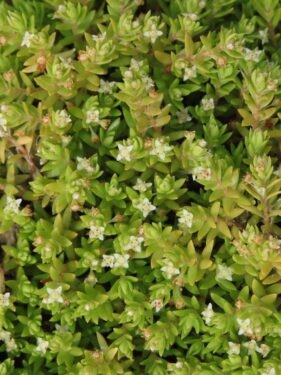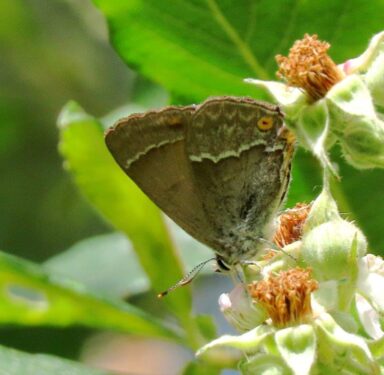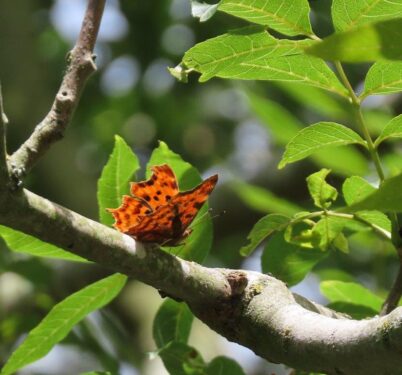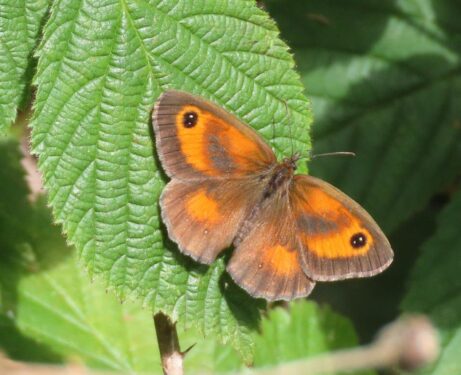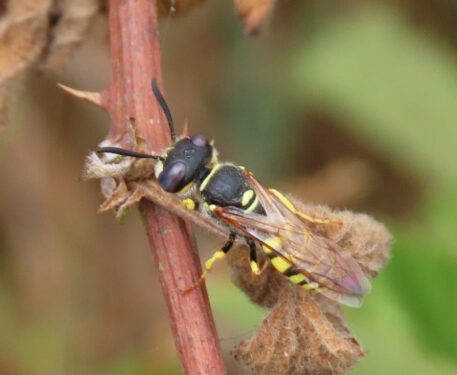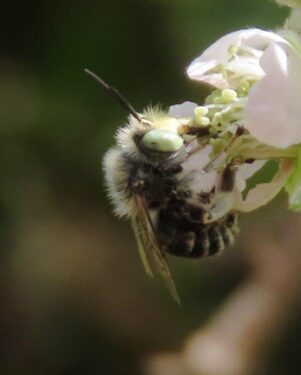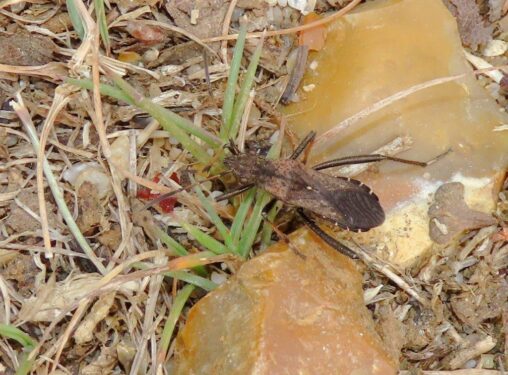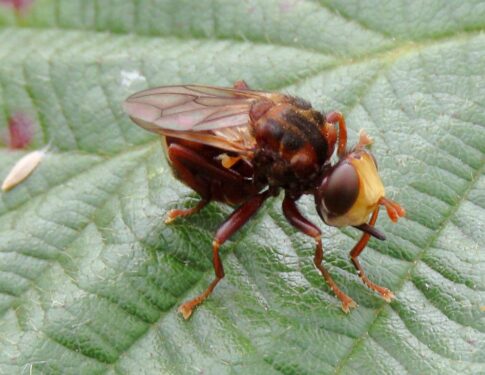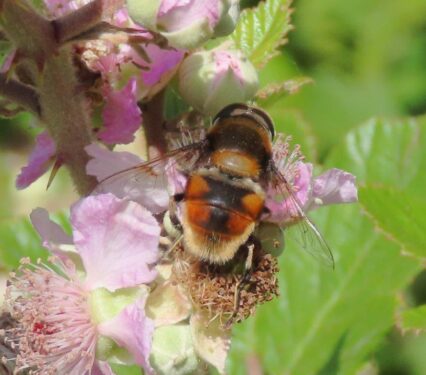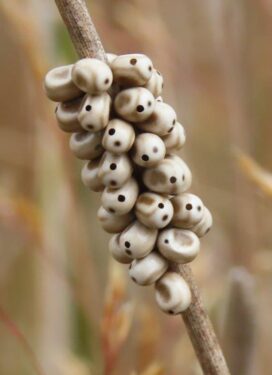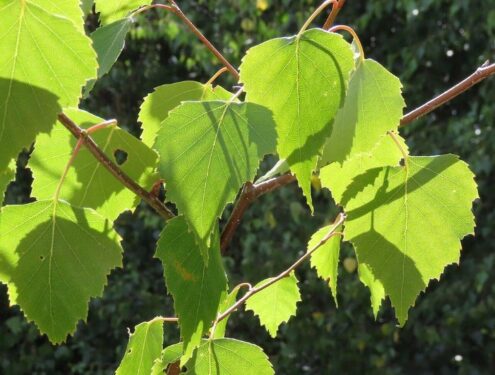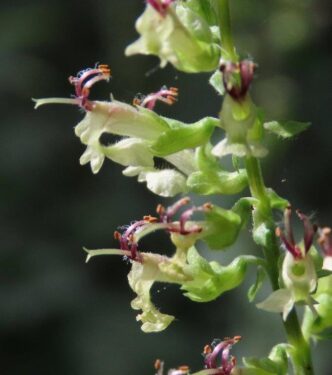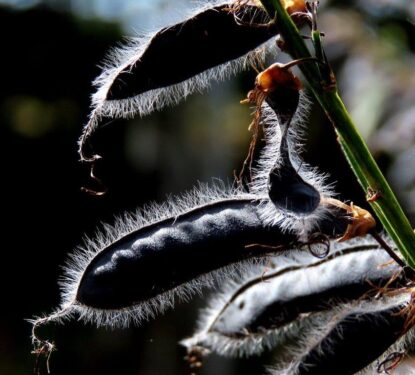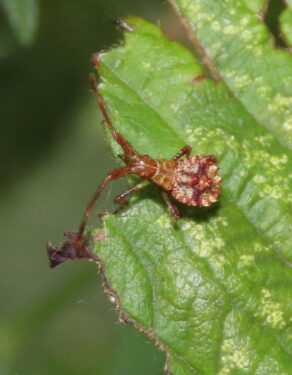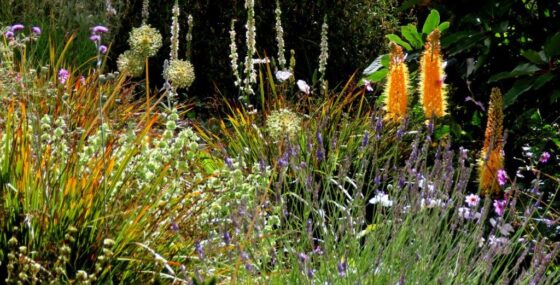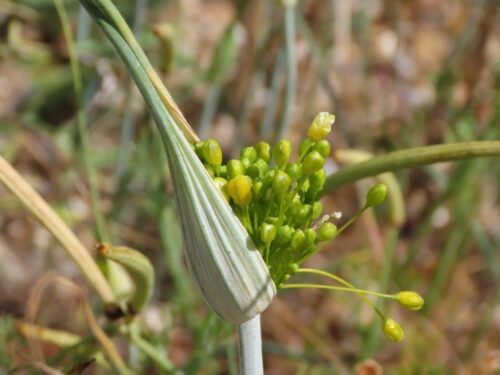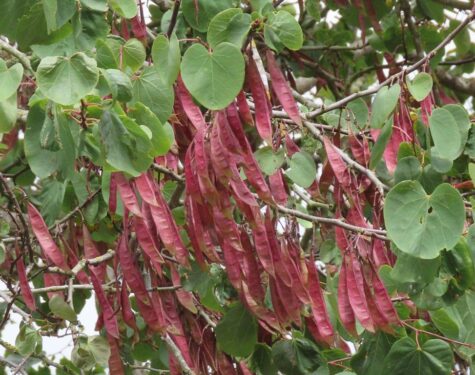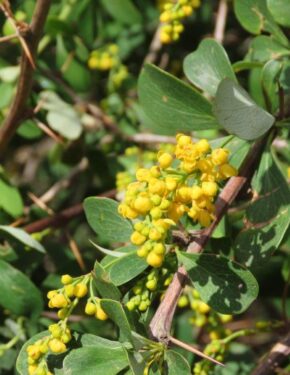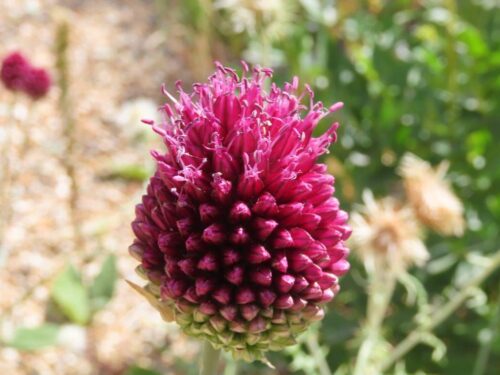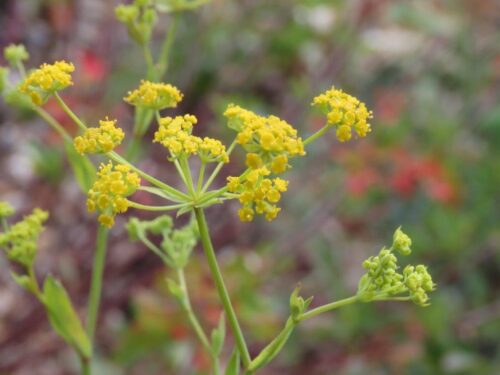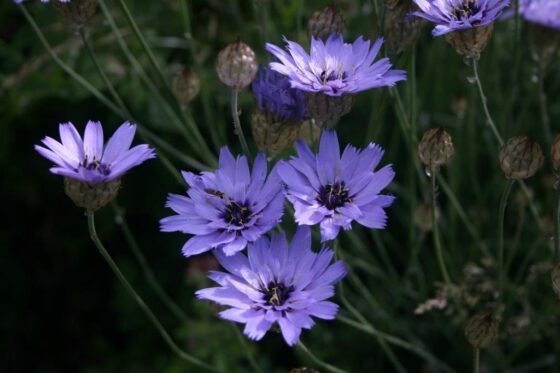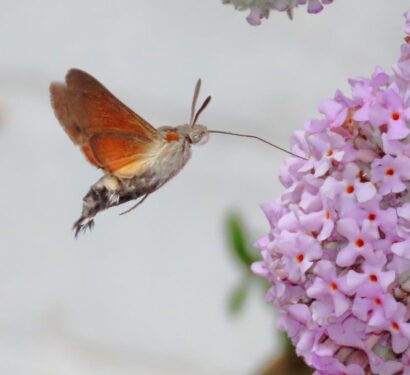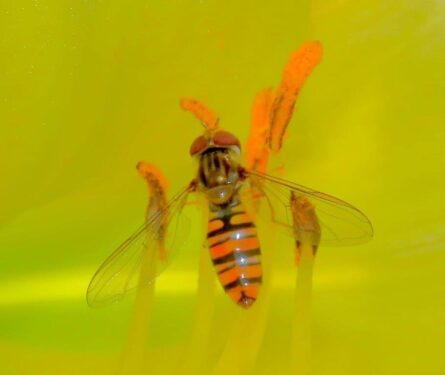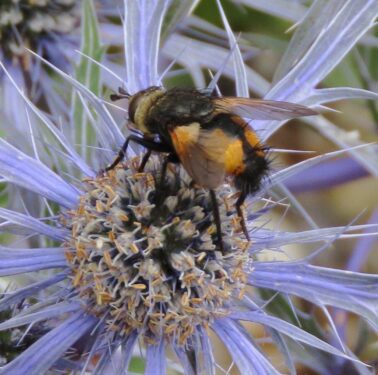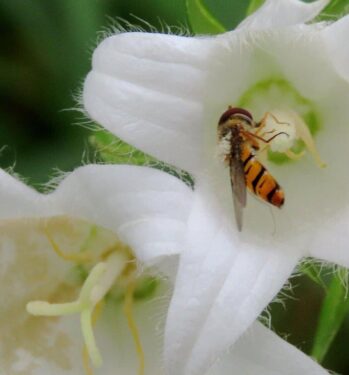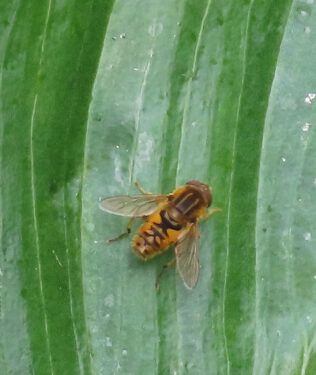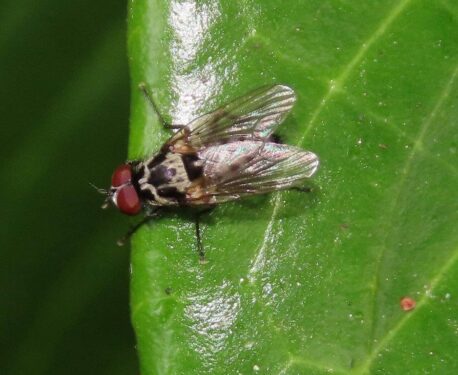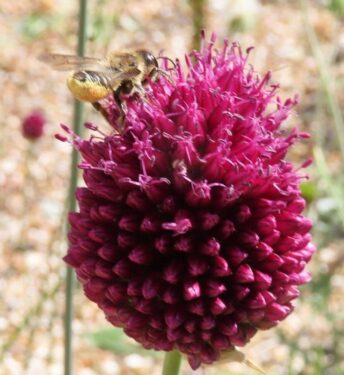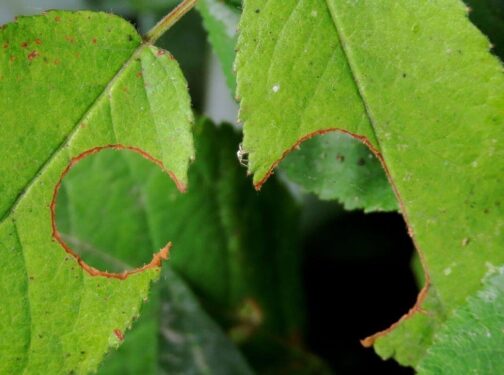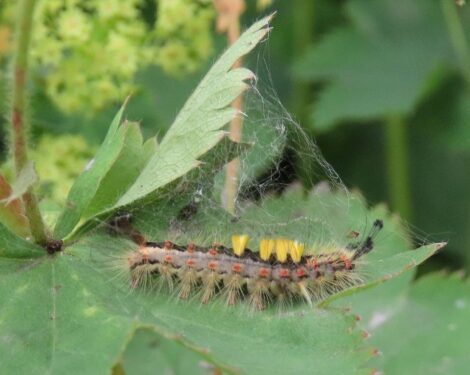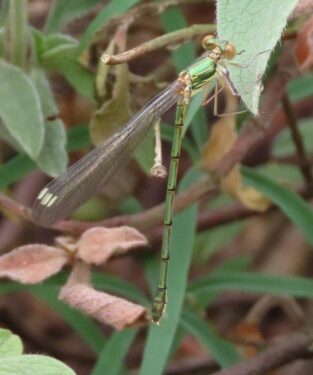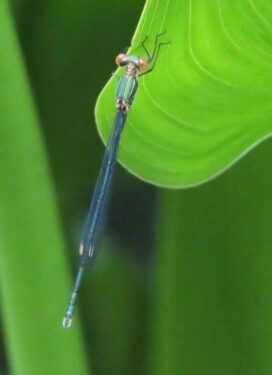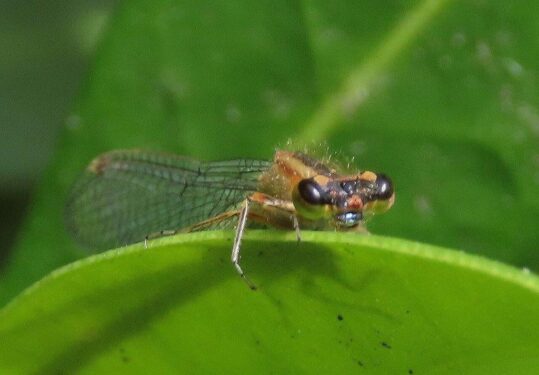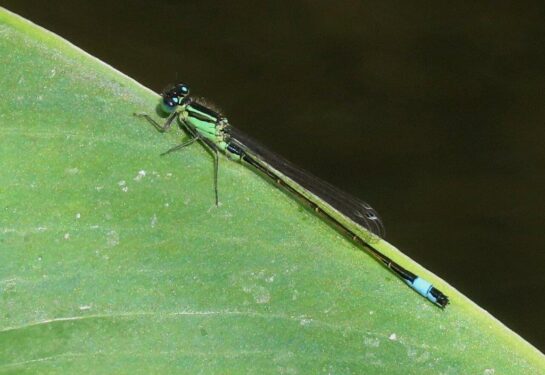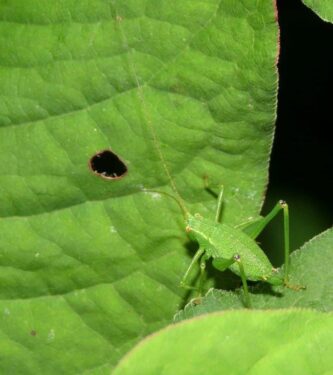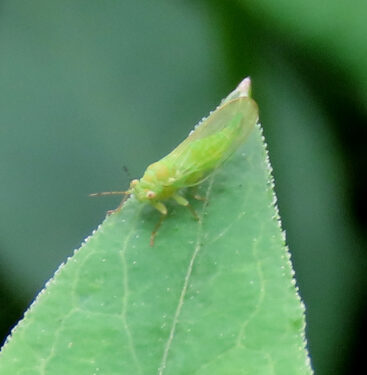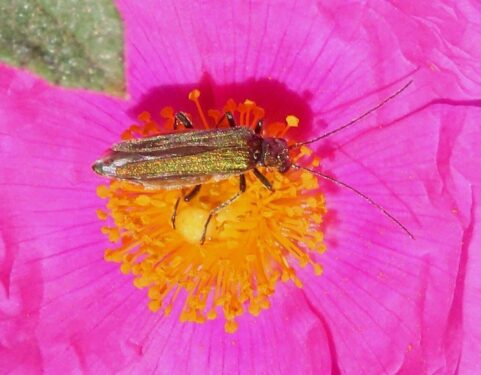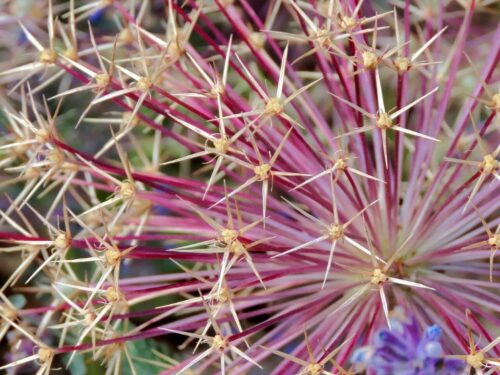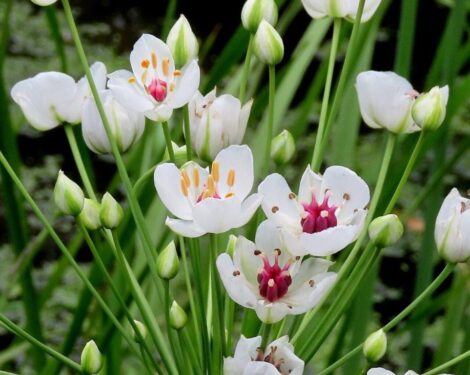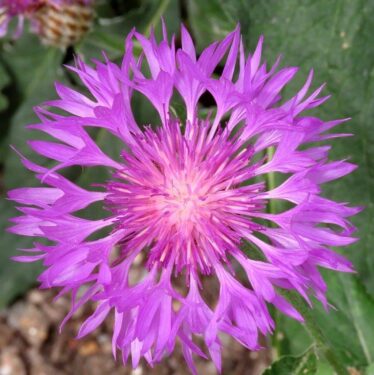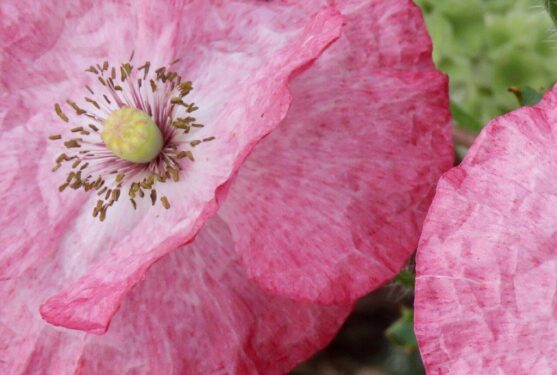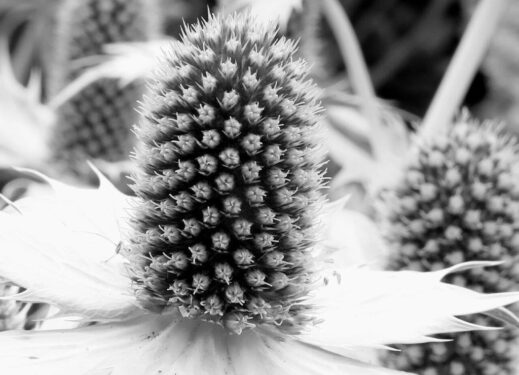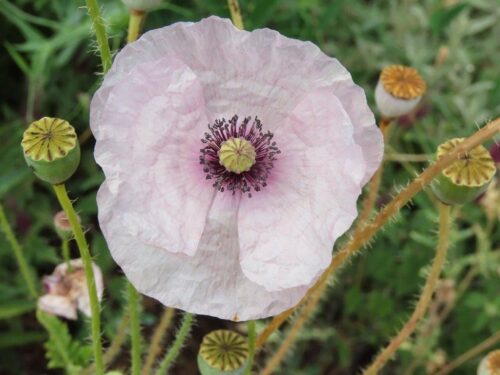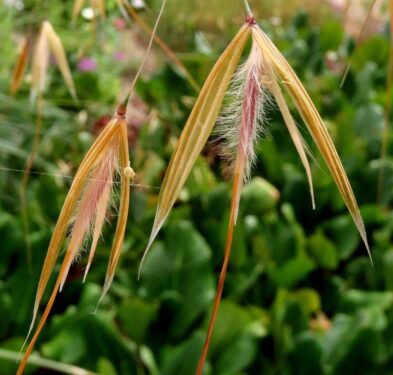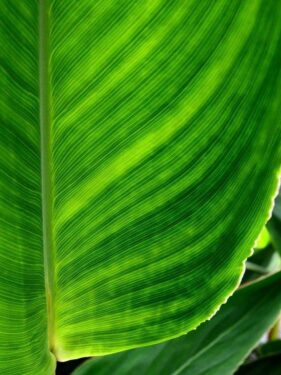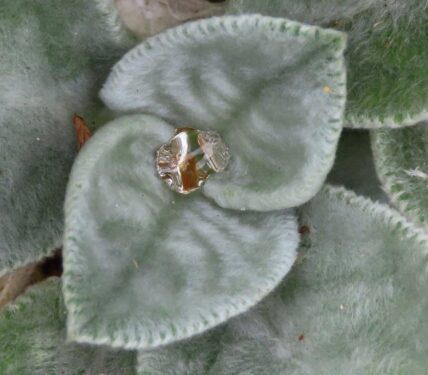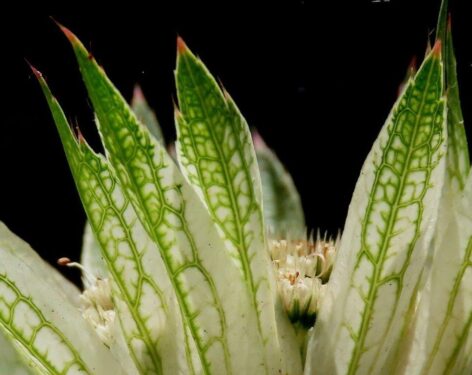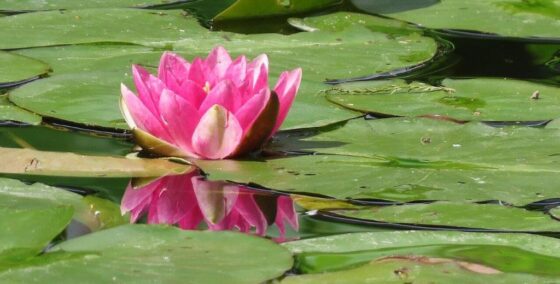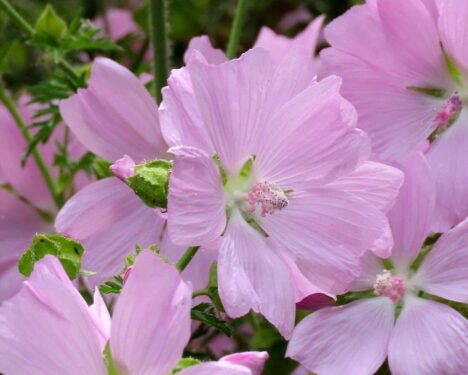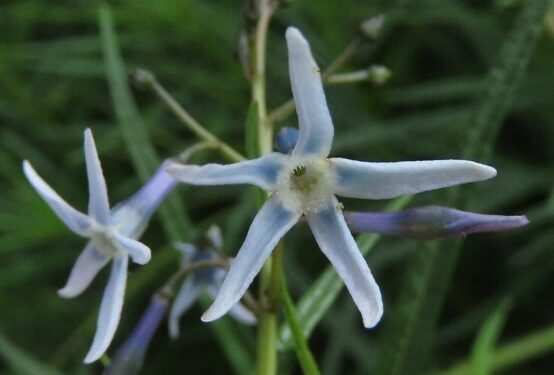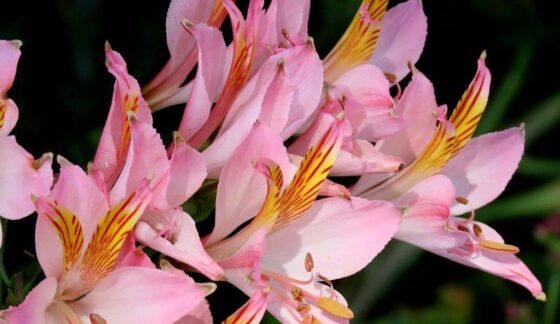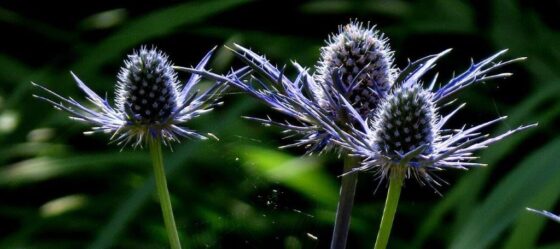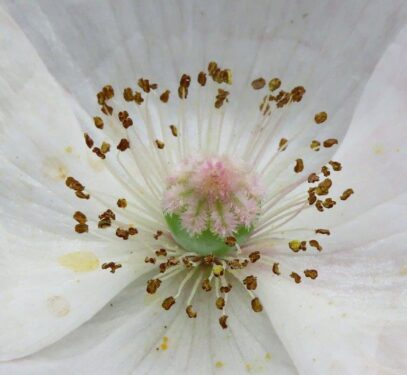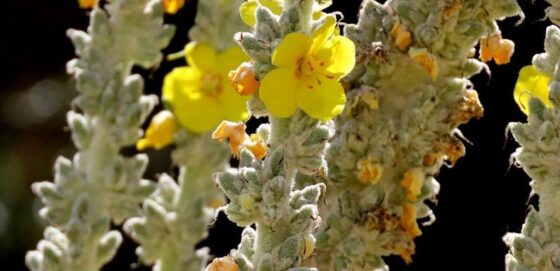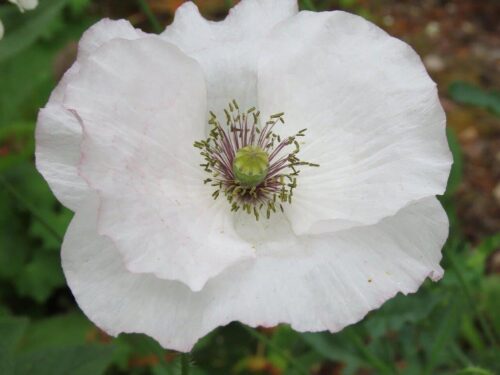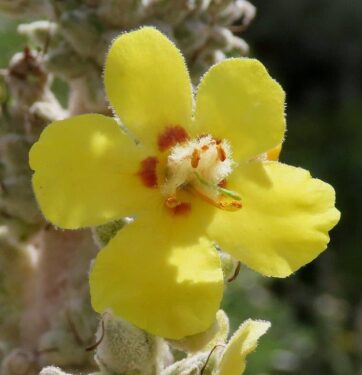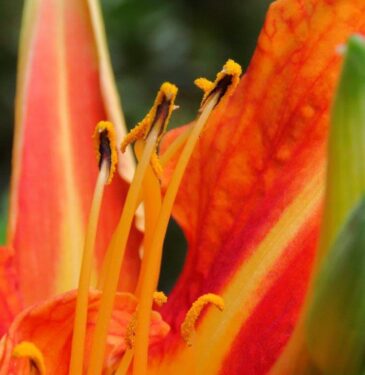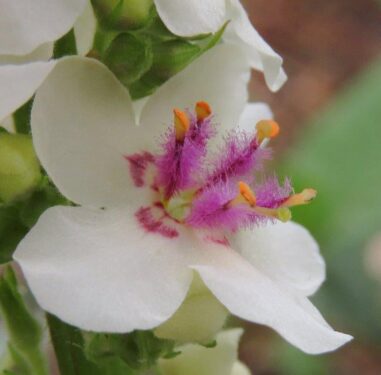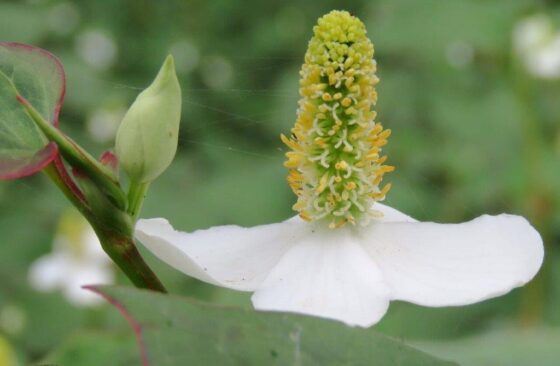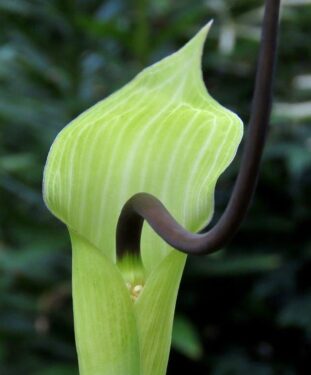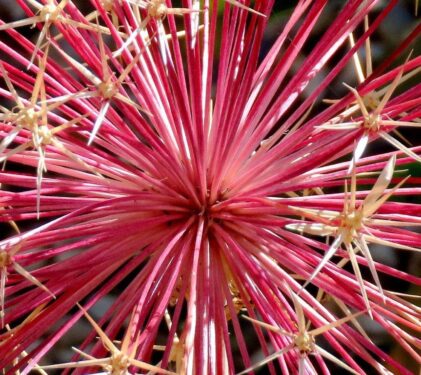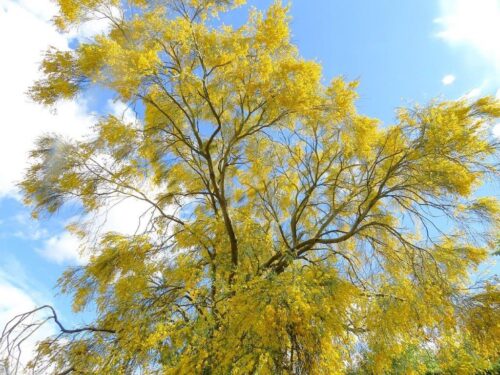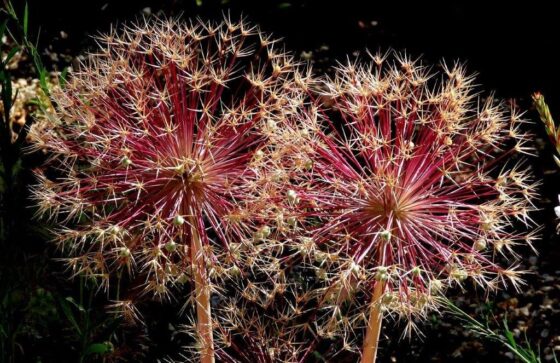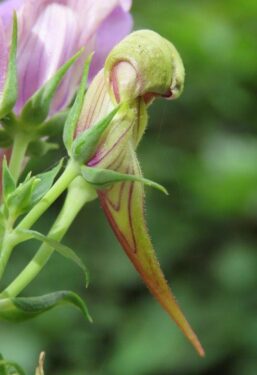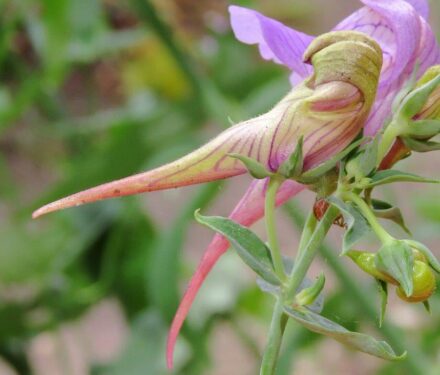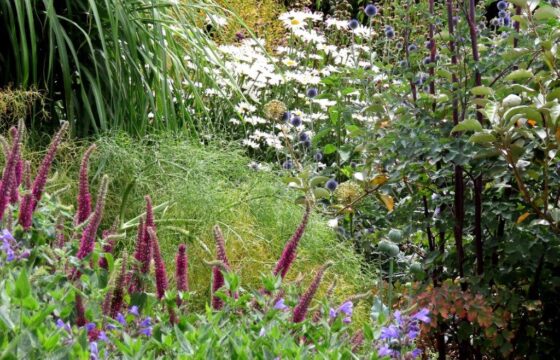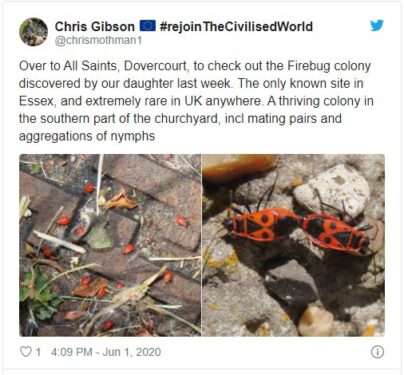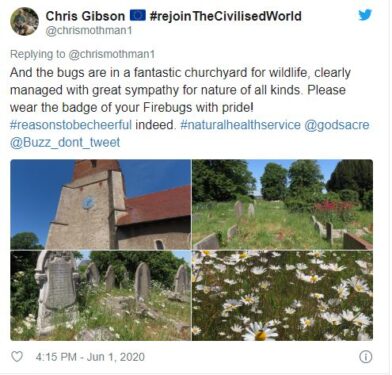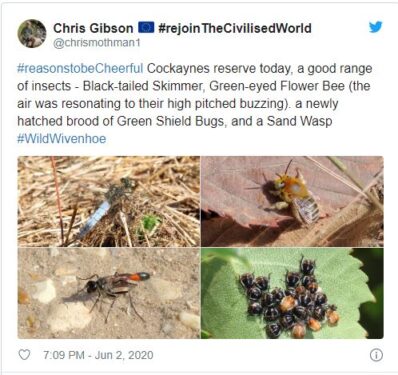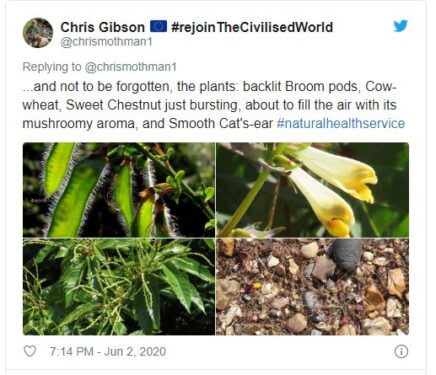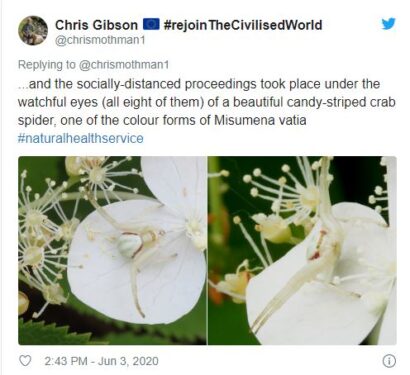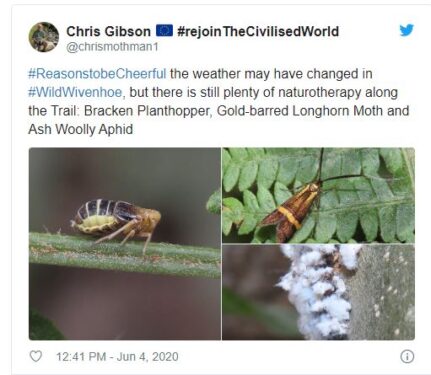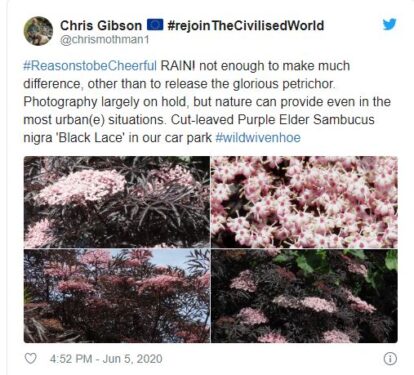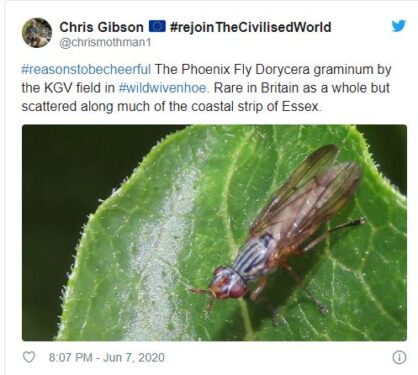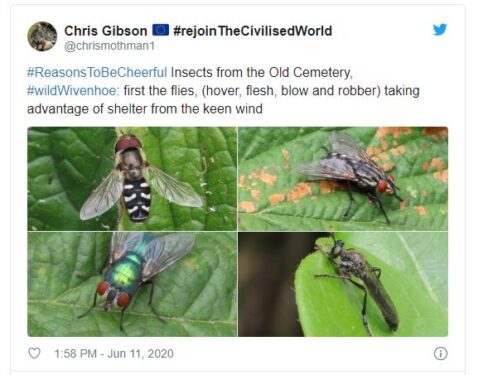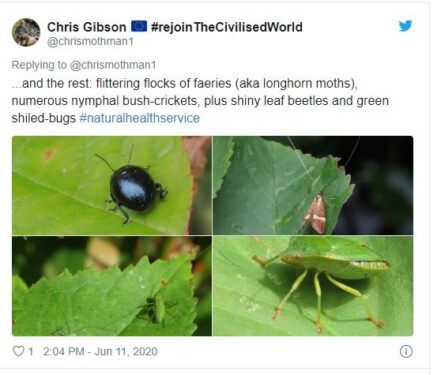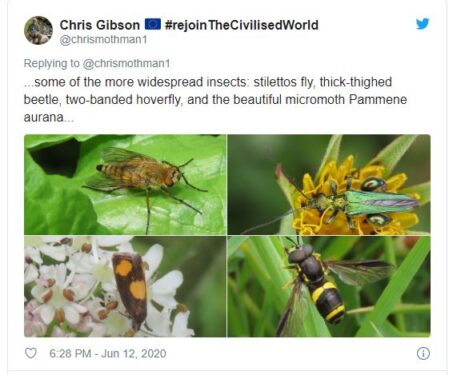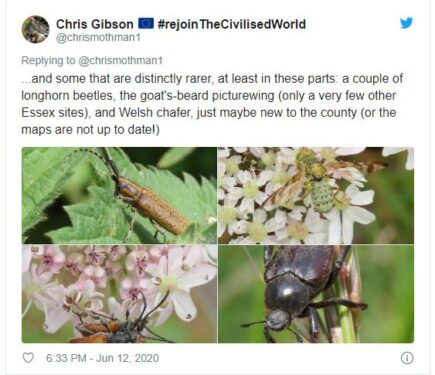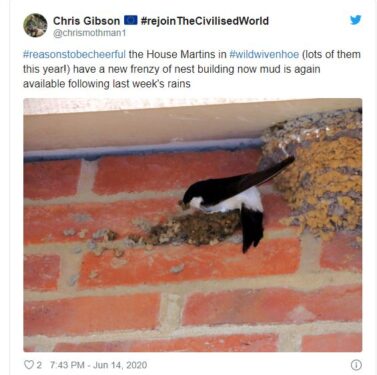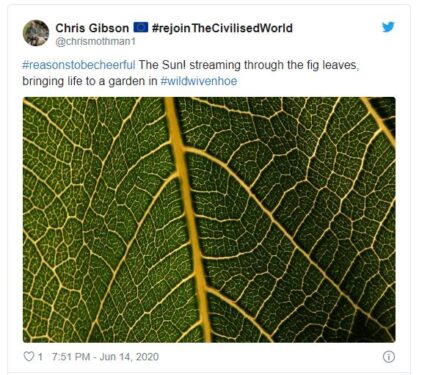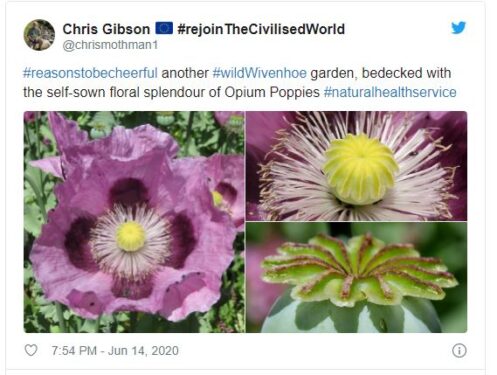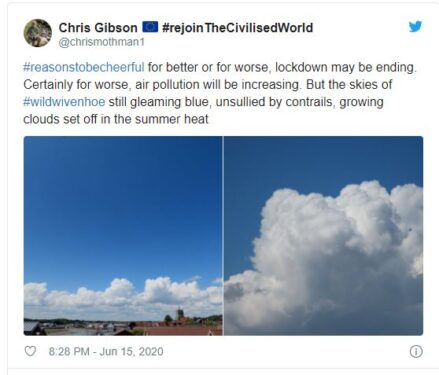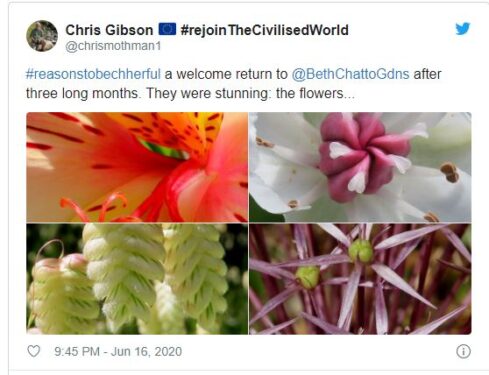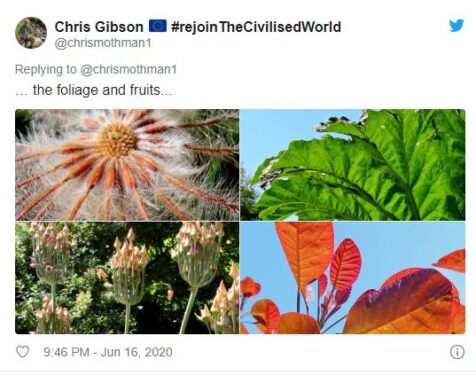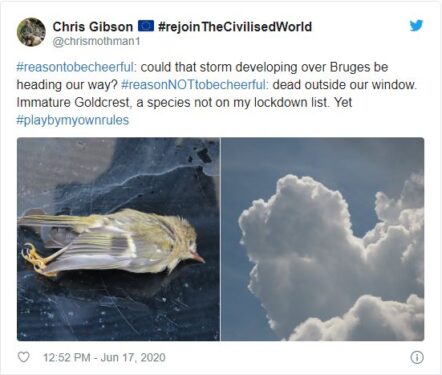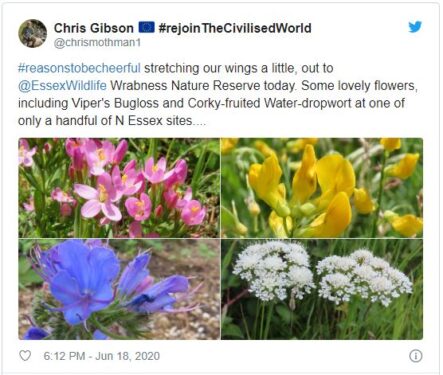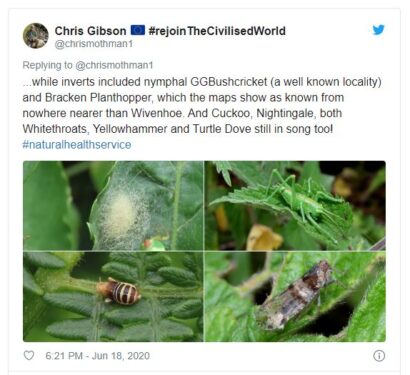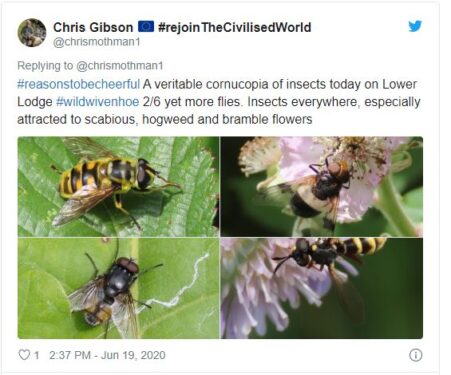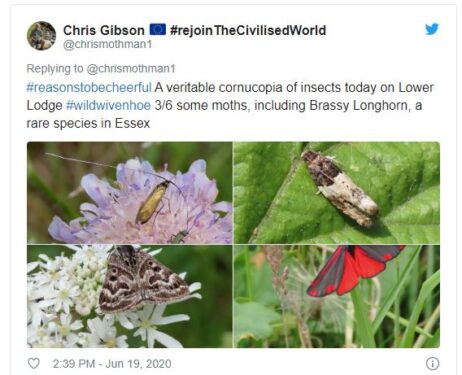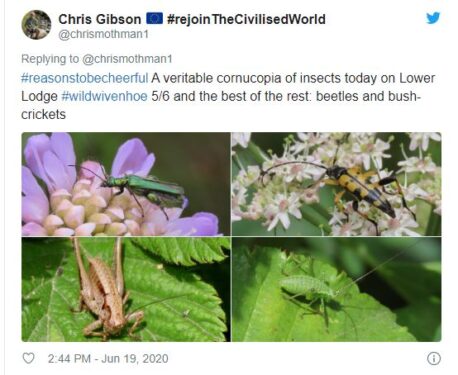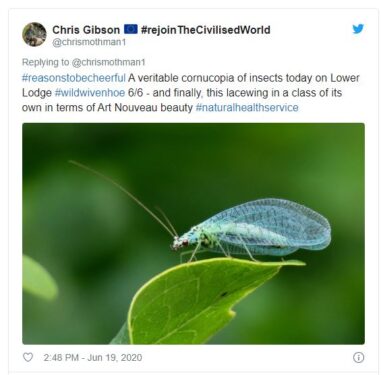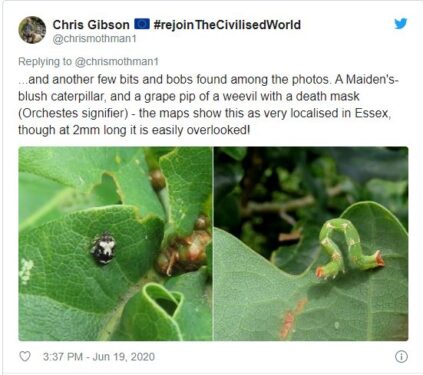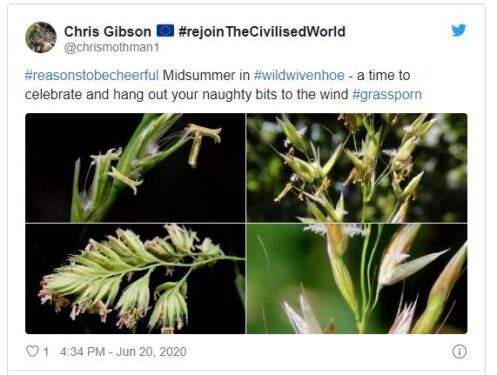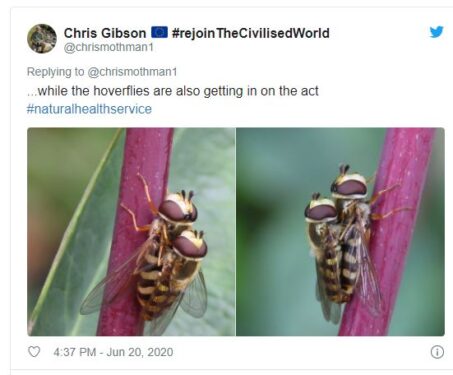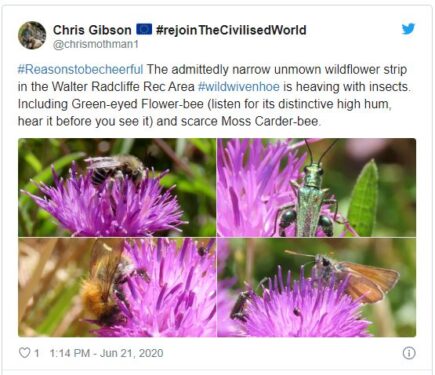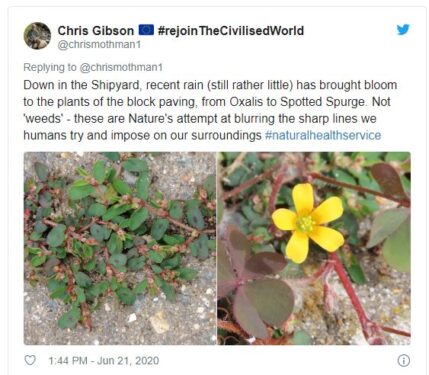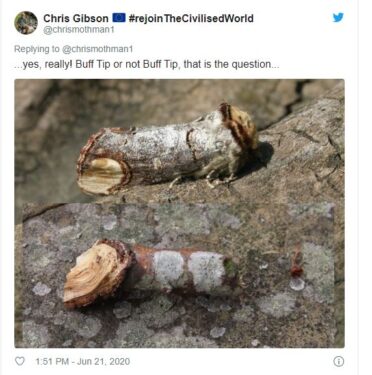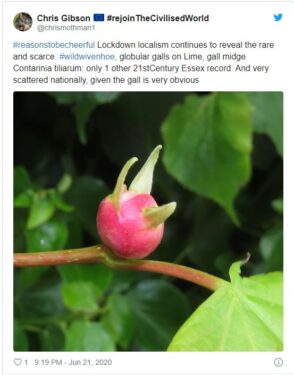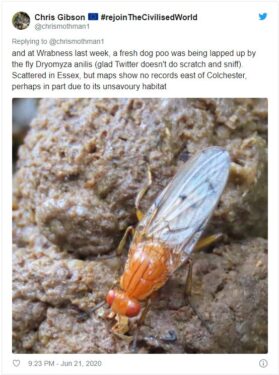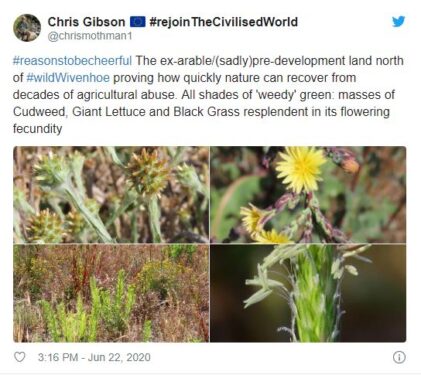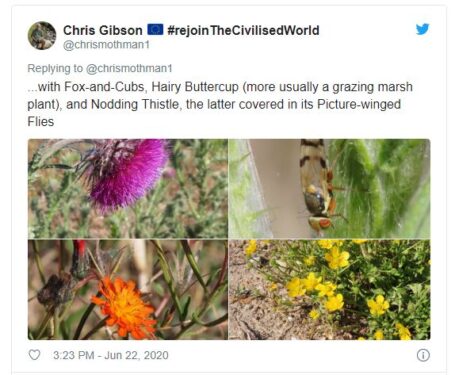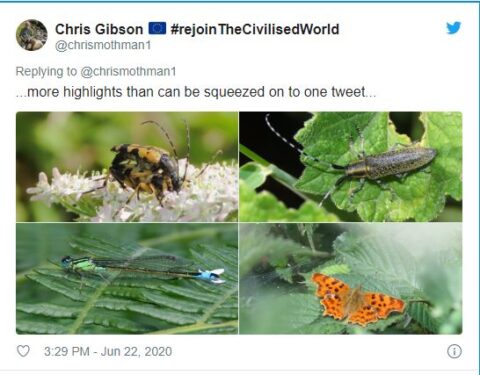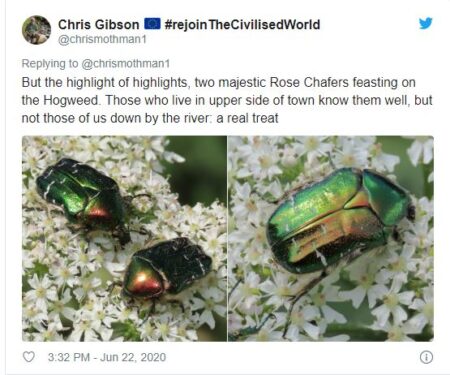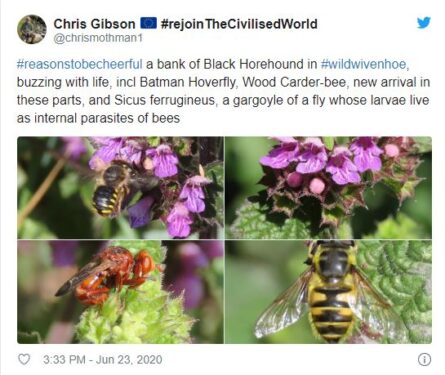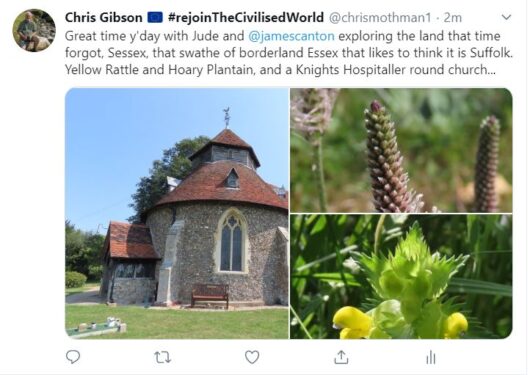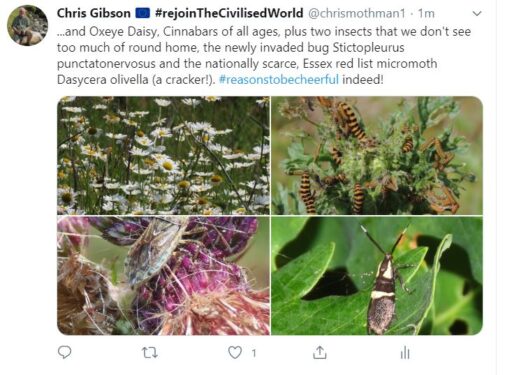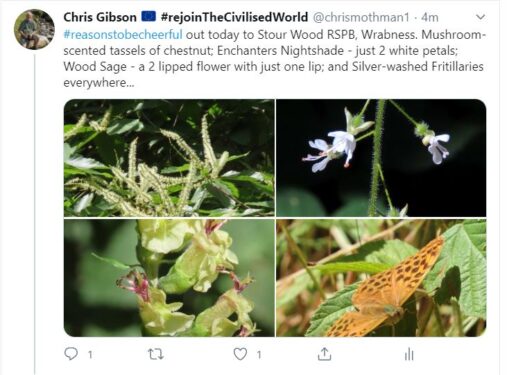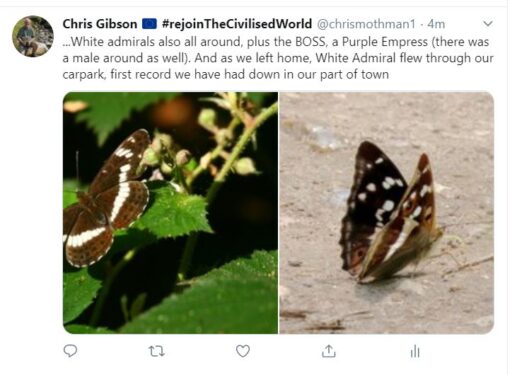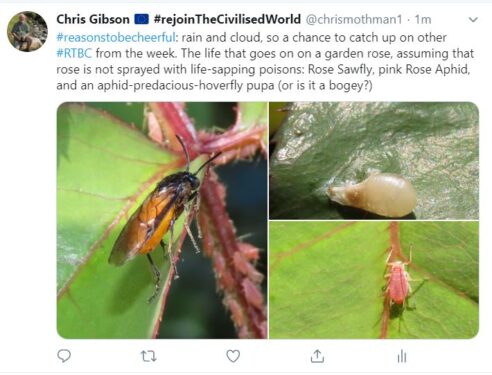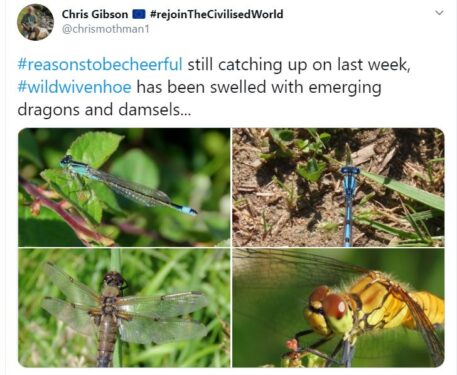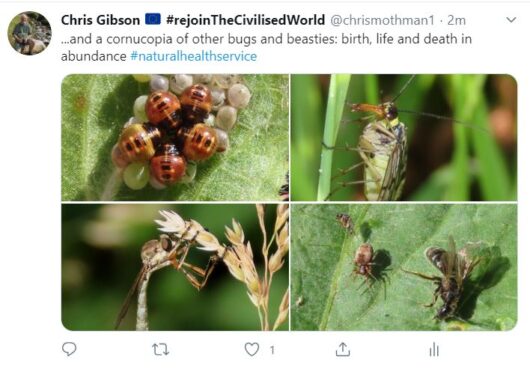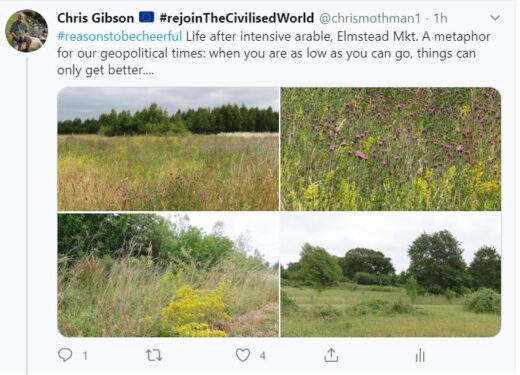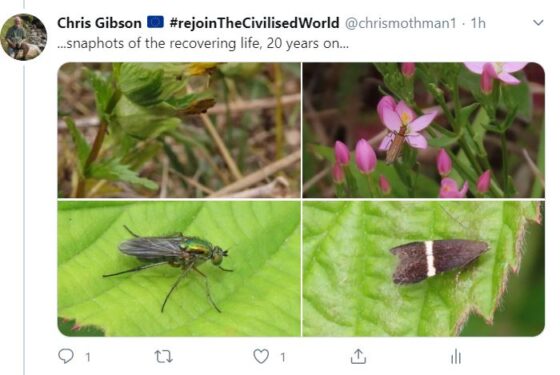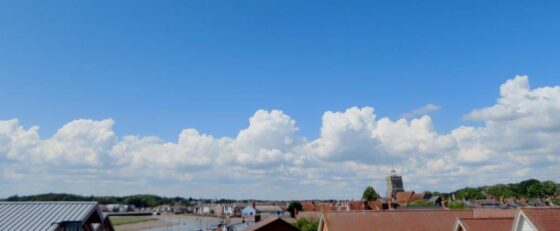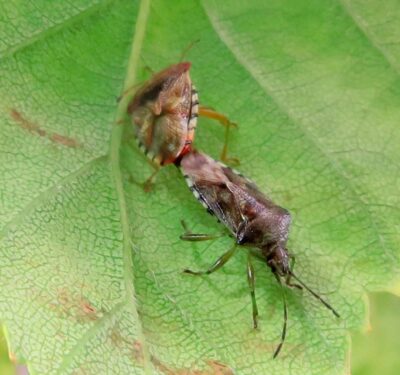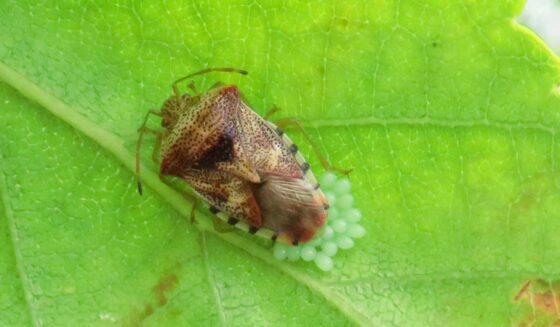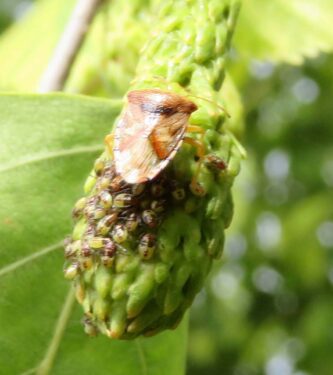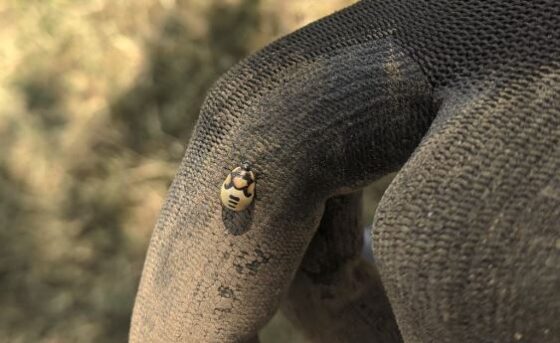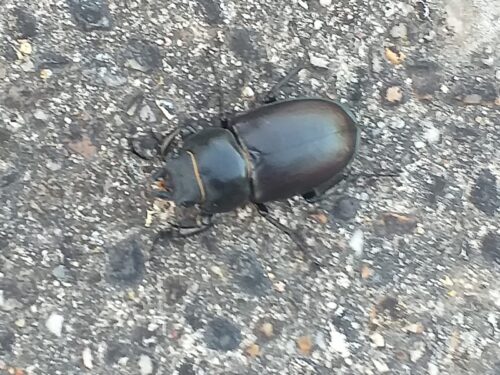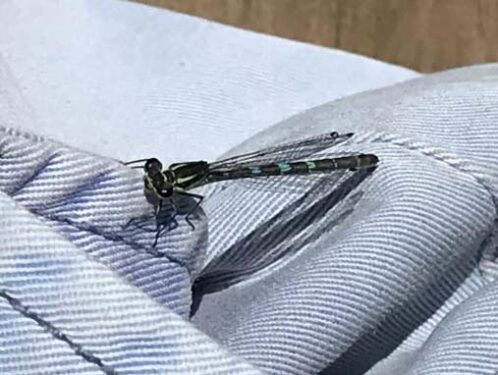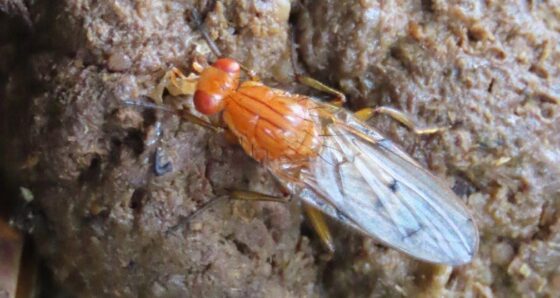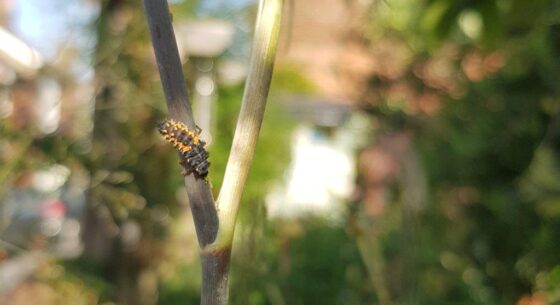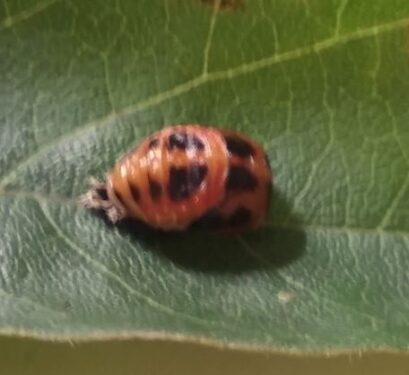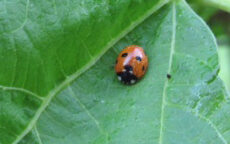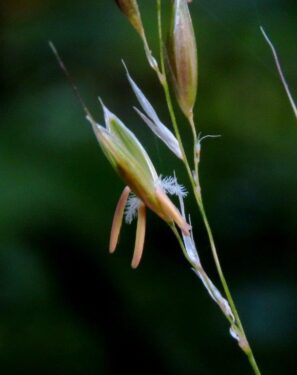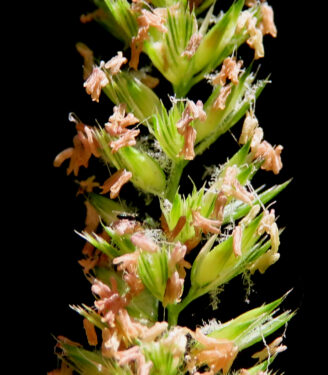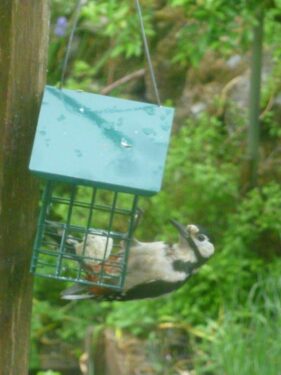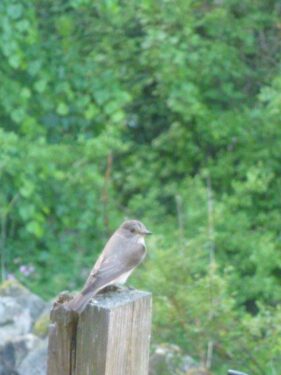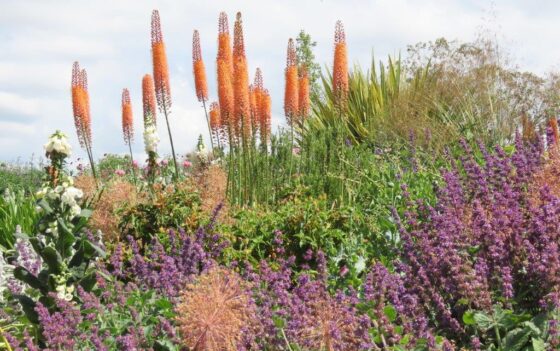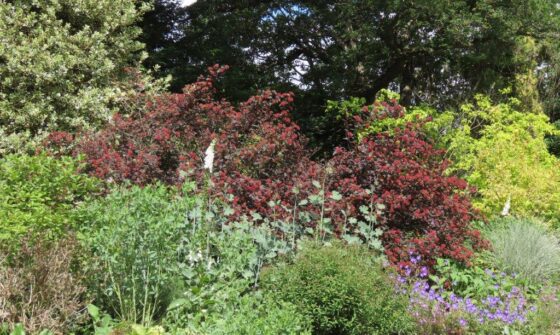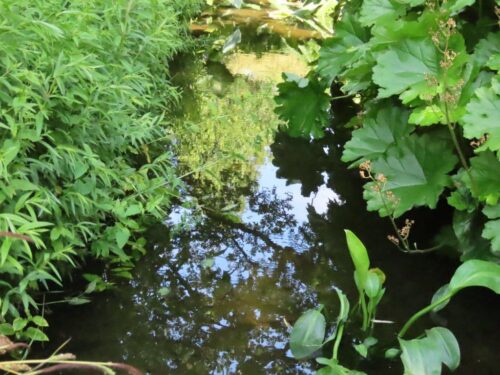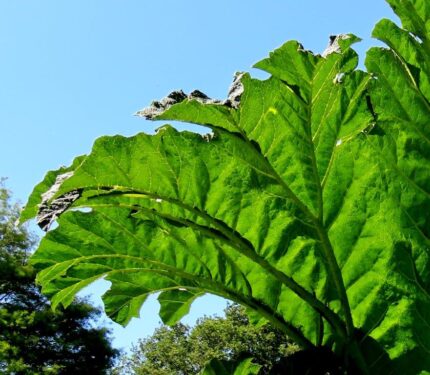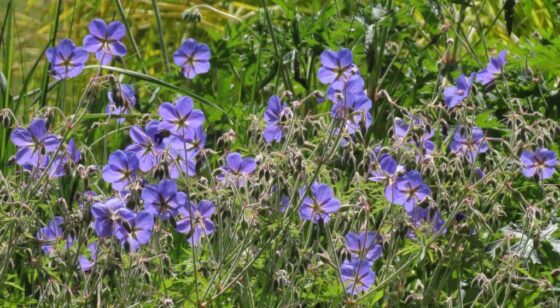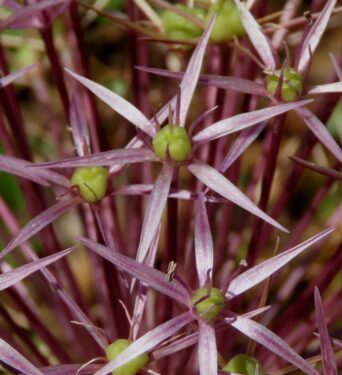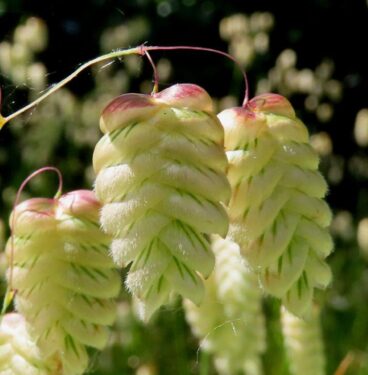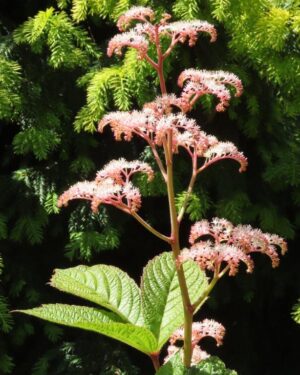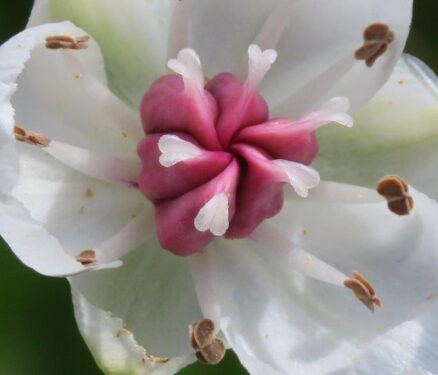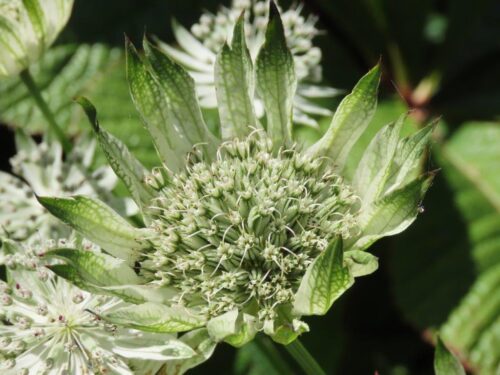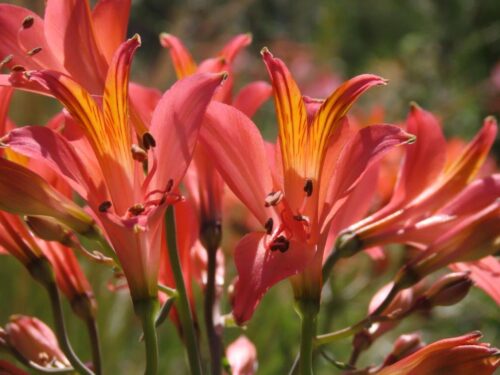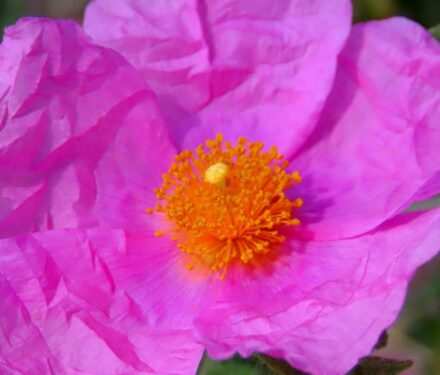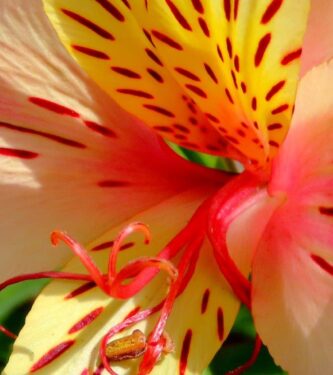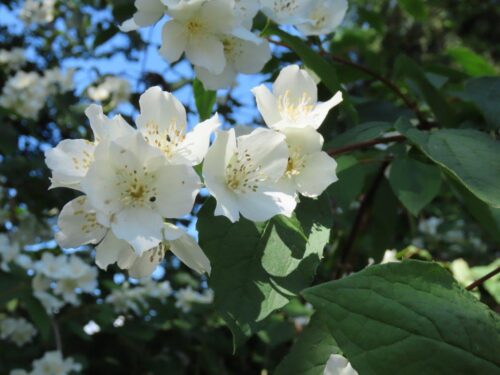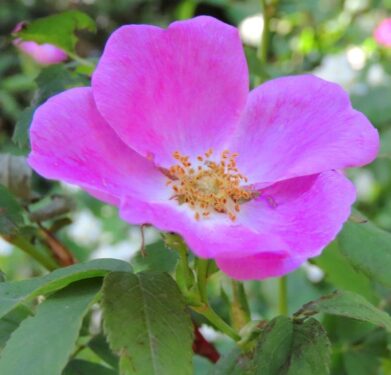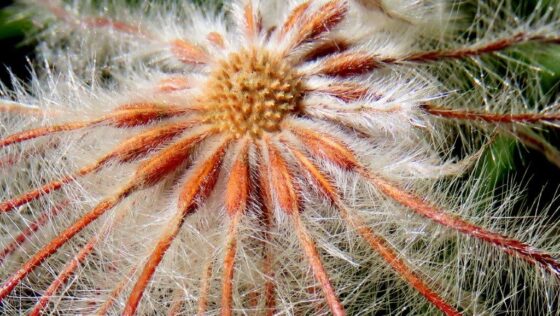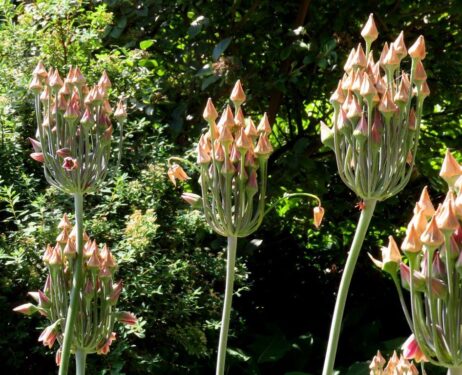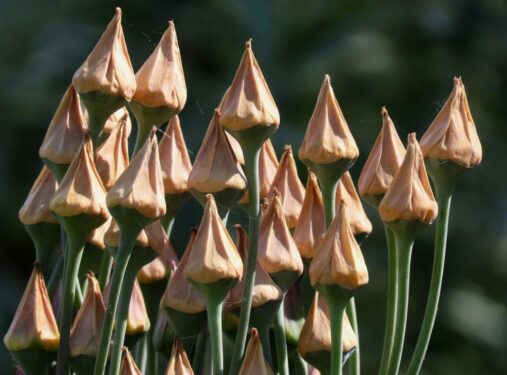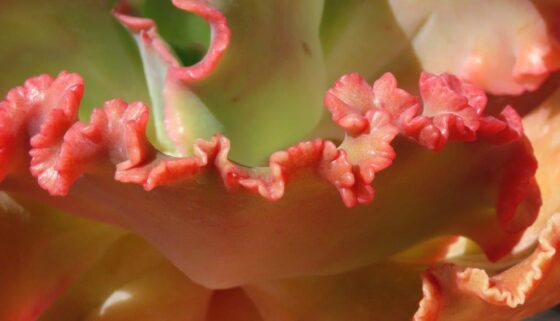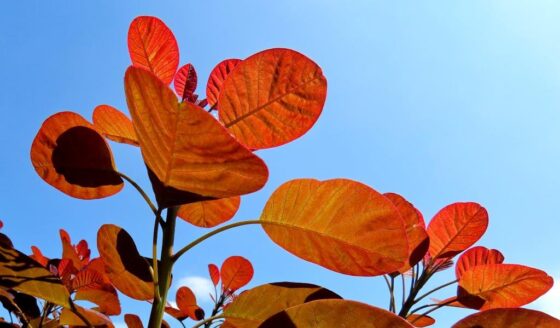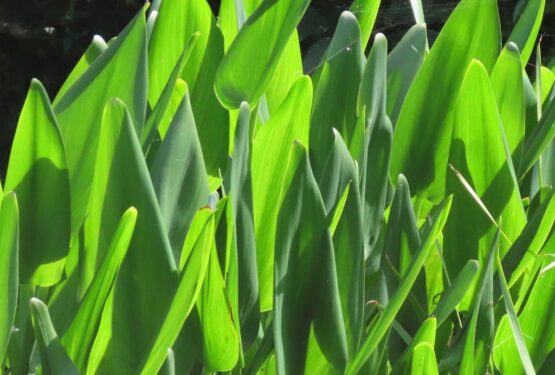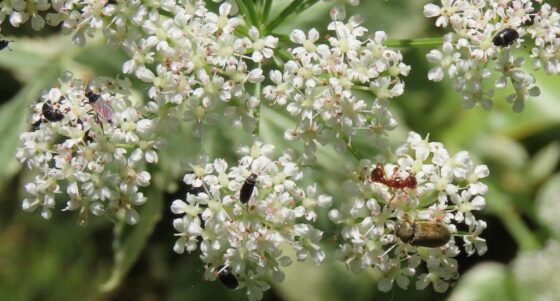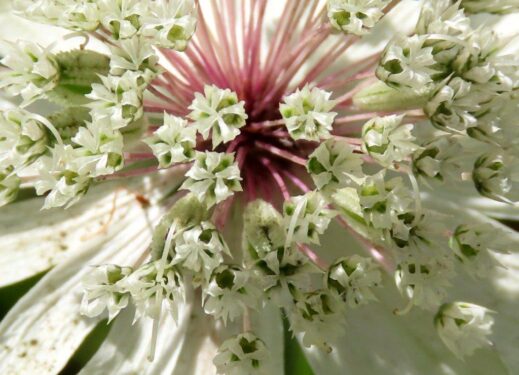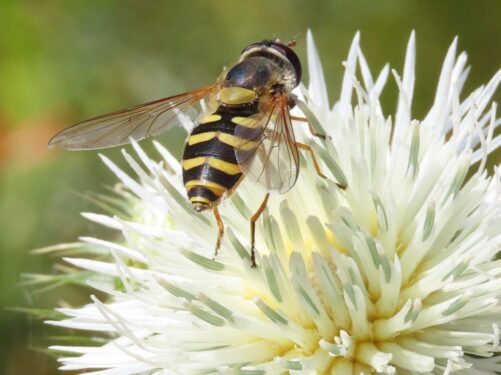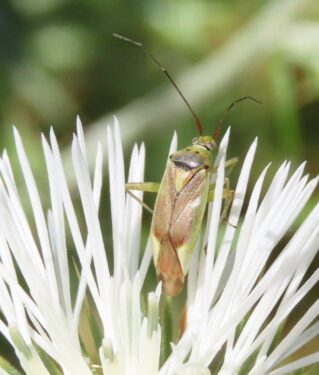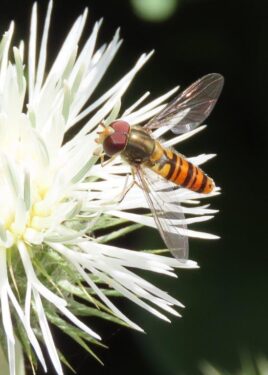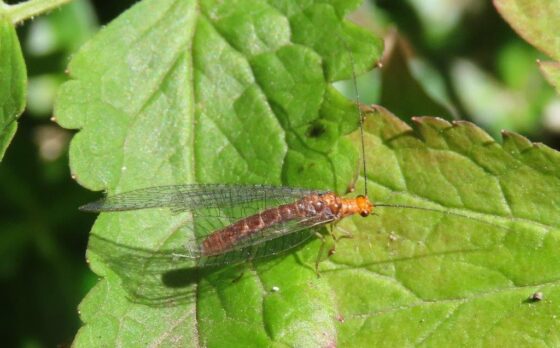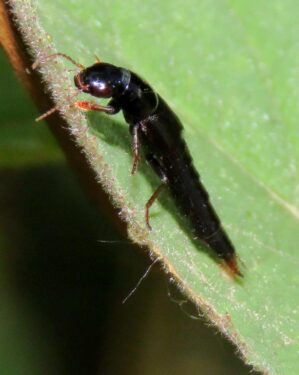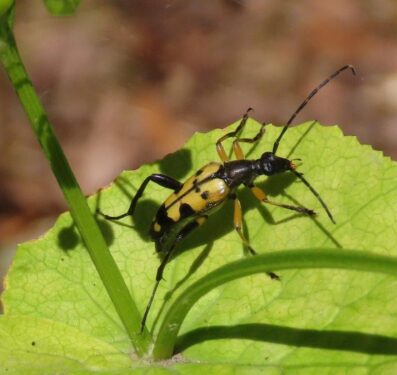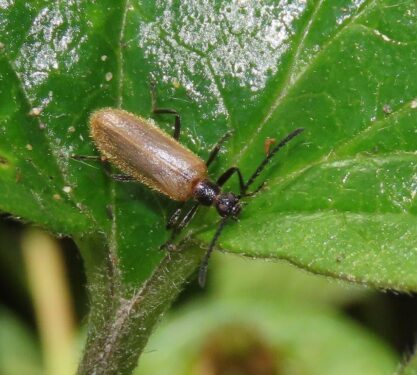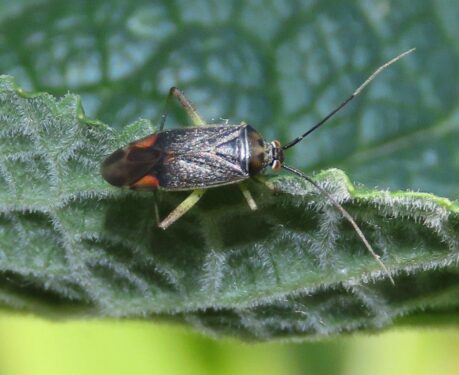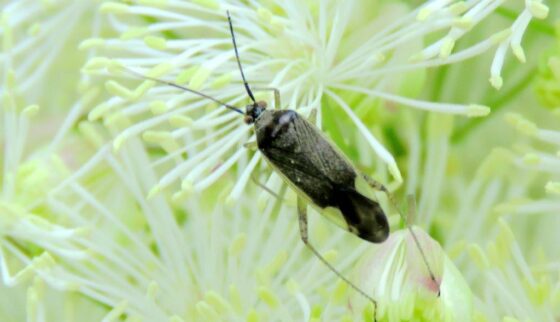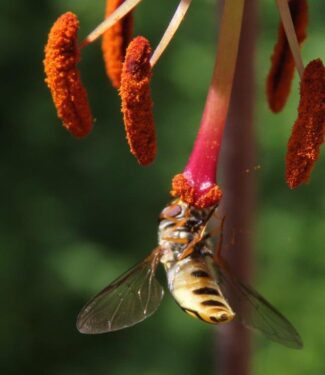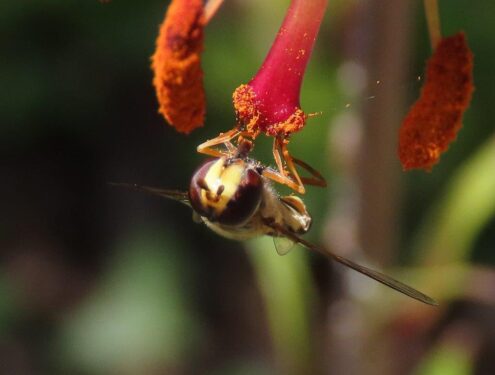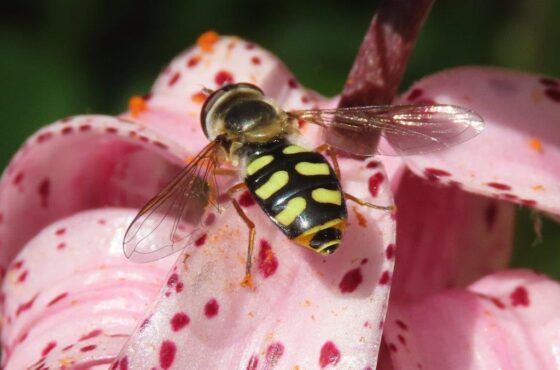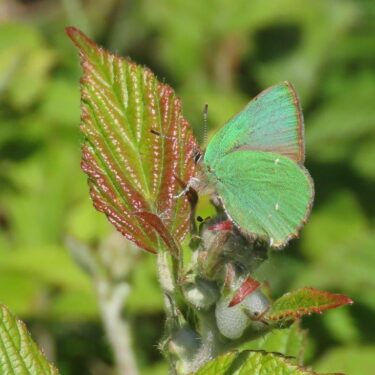
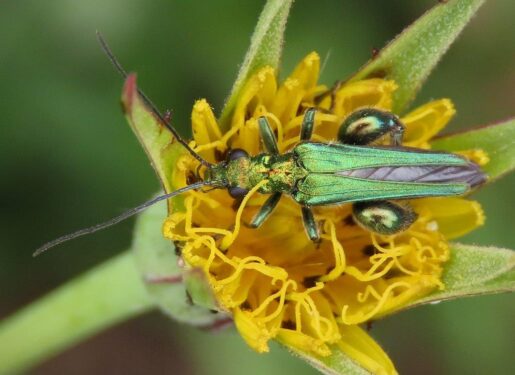
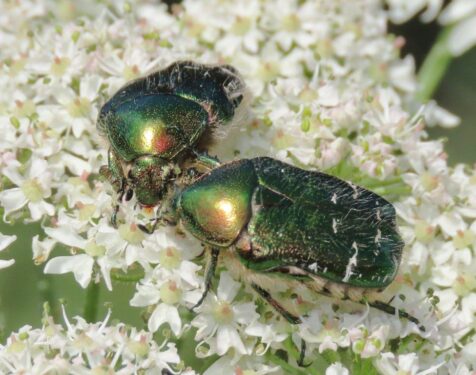
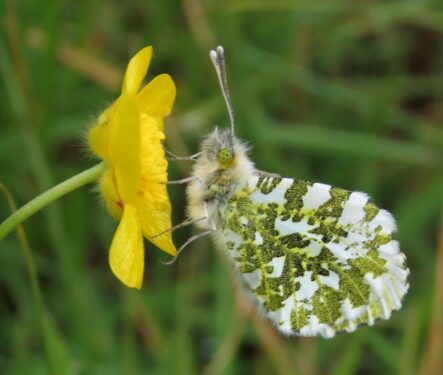
One of the advantages of COVID-19 lockdown has been having the time and opportunity to study our own local surroundings in detail, regularly throughout a three month period from spring into summer.
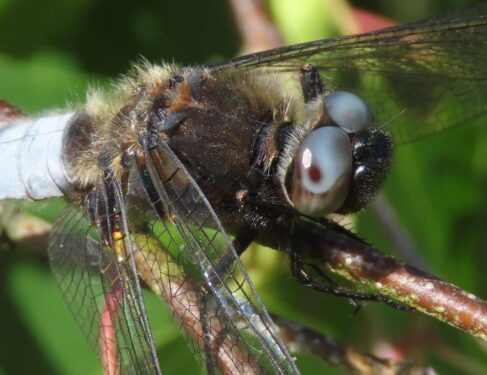
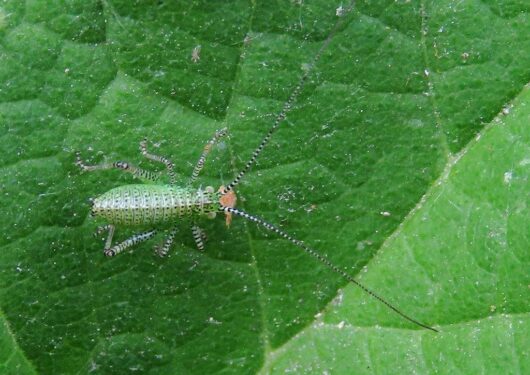
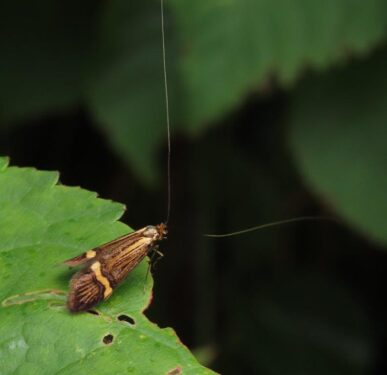
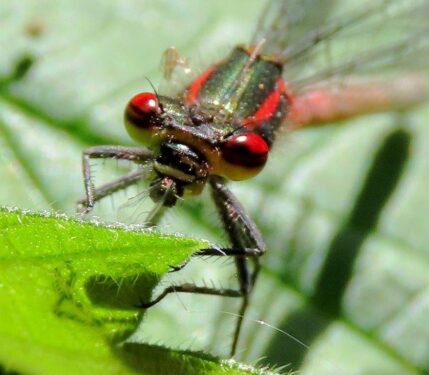
Birds are all well and good, but there are relatively few of them (our flat lockdown list amounted to just 83 species, although that did include White-tailed Eagle, Goshawk and Osprey…). Plants also – more of them, but the species don’t change much from week to week – the same species just become more, or less, obvious. So it was the invertebrates which occupied most of our time – myriads of species, lots to learn, and many are around for only a short period, the sort of creatures that could easily be missed in a ‘normal’ spring of weeks away in other parts of Europe.
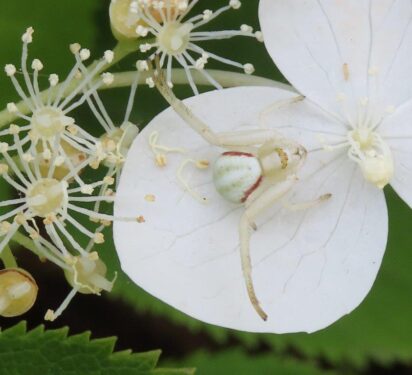

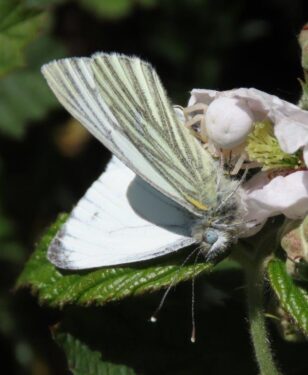
So we have had an unprecedented opportunity to study the local insects and other invertebrates from mid-March right through to the end of June, all within a 5 km radius of Wivenhoe, widening only during the final two weeks to 30 km. We have seen many wonderful creatures, a good number new to us, and a surprising number new to this part of the world, even new to Essex, a useful contribution to the distribution mapping which is now undertaken for most groups.
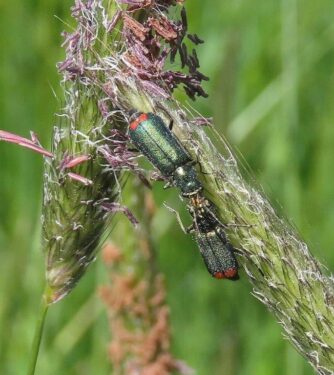
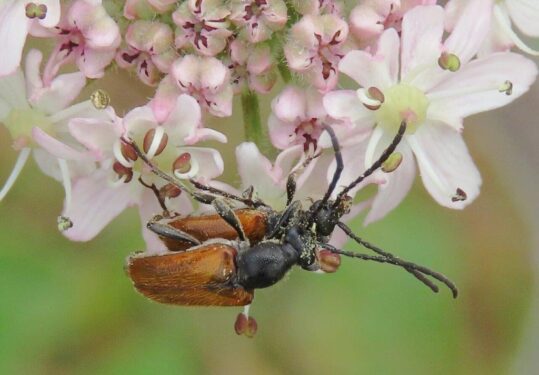
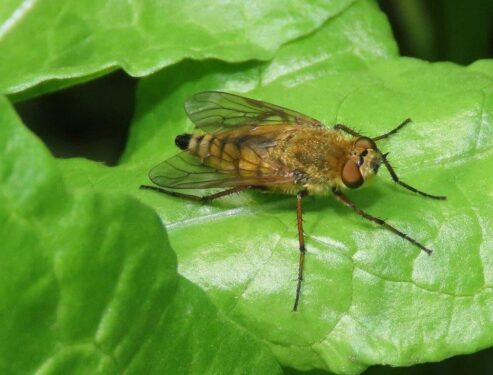
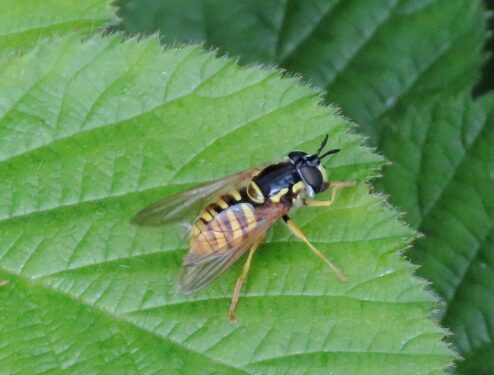
Of course, for the less obvious groups, our knowledge of distribution is at best rudimentary, and the maps reflect more the distribution of observers who are capable of and can be bothered to report them. But, data are data, information is a resource, however imperfect. What follows is an account of some of our highlights, starting with those species which seem genuinely to be rare in north-east Essex at least, then those which are less scarce, (but still good to find, record and report), interspersed with galleries of some of the commoner ‘little things that helped make our world go round’ in lockdown. To demonstrate how localised some species are, or are recorded as being, I have incorporated some distribution maps from the Essex Field Club essexfieldclub.org.uk, a hugely important resource which is one of the many reasons why any active naturalist in the county should be a member. Maps are available for almost all groups of terrestrial invertebrates, the main omissions being beetles (sadly).
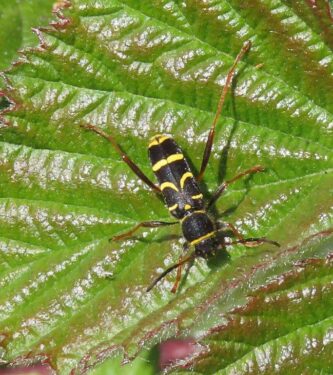
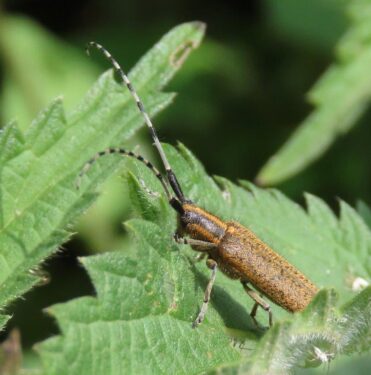
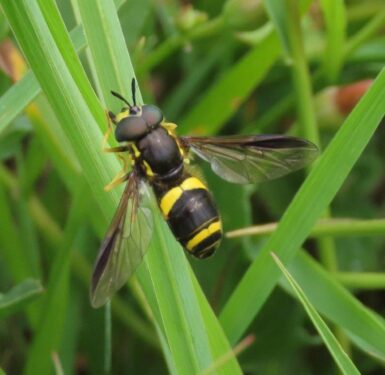
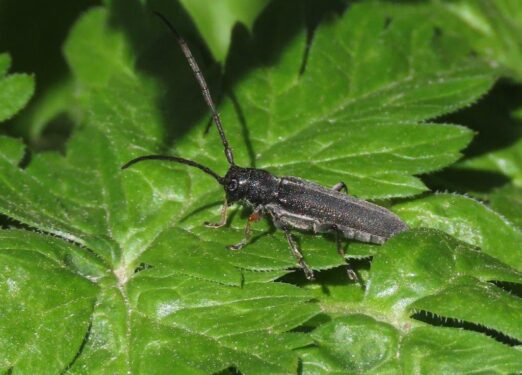
Rarest of the rare, new(ish) to Essex
Rarest of all are also two of the showiest, big black-and-red bugs, both new to Essex, and both familiar to us from trips to the continent. In mid May, next to Wivenhoe Ferry Marsh, we found an Ornate Shield-bug (below, left). This has become established in the British Isles only recently, first in the Channel Isles, and then in some extreme southerly coastal areas of Dorset, Hampshire, Isle of Wight and Sussex. Beyond these areas, it has turned up sporadically elsewhere in southern England and Wales, whether by natural spread or accidental introduction, although it has never previously been recorded from Essex. It now seems to be showing signs of wider colonisation, with recent records from as far north as Norfolk.
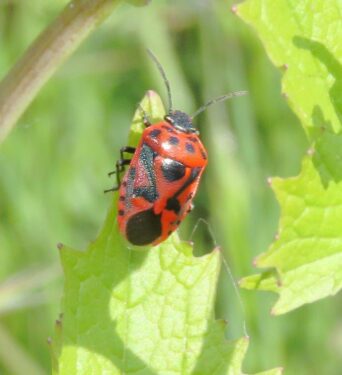
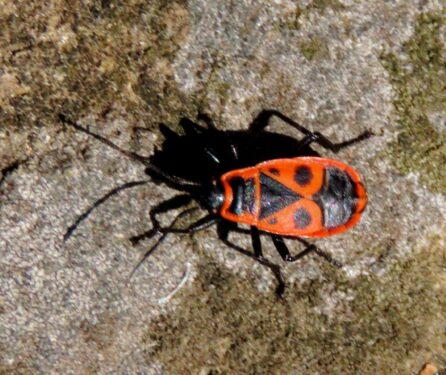
It is of course not possible to ascertain when or how it arrived in Wivenhoe, although the southerly airflow around the time of its discovery would have been conducive to natural dispersal. And with climate change, it may well be expected to extend its permanent range: suitable typical foodplants (Brassicaceae) are widespread. But flying here is not an option for the second discovery, Fire-bug (above, right) as it is wingless. We have reported its discovery in a previous blog, although as an update, we have subsequently learned of another Essex colonisation event, at Shoeburyness, over the past three years.
Nature’s barcodes – picture-winged flies
A distinctive group of flies that can generally be differentiated by a combination of the plant they are inhabiting, and the details of ant pattern on the wings The first, Urophora stylata, encapsulates the ‘map problem’ well. Dependent upon very common plants (thistles), it is probably one of the commonest Essex picture-wings. But the map is full of holes, particularly in the north-west, where the concentration of active entomologists is lowest. Abundant in mid-June on ex-arable land north of Wivenhoe, in reality it may well be everywhere, notwithstanding the map showing only half a dozen locations east of Colchester.
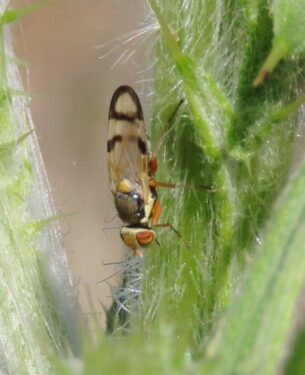

In contrast, Orellia falcata does seem genuinely to be scarce in the county, indeed in the Essex Red Data Book and Nationally Scarce, restricted as it is to grasslands rich in its foodplant, Goat’s-beard. Our record from Lower Lodge is the only one from the north :
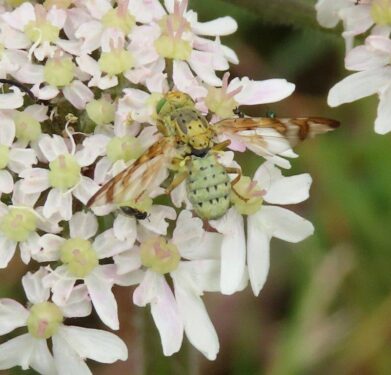

White Bryony is a subtly beautiful plant, the only native cucumber relative, and it too has has its specialist picture-wing, Goniglossum wiedemanni (ERDB, and NS again), seemingly a specialist of the Colne Valley. Interestingly, searching through our images showed we had recorded this (on Ballast Quay Lane, in 2015) but forgotten about it until this year’s sighting by the KGV playing field…
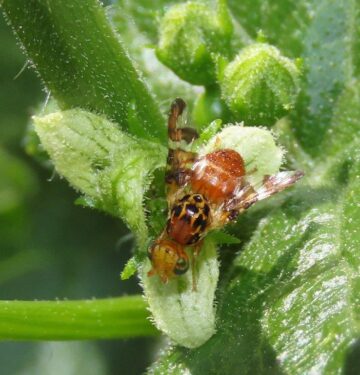

Not all ‘picture-winged flies’ have pictured wings. One such is the Phoenix Fly Dorycera graminum, a species on the UK Red Data List. Although widespread and coastal and riverine habitats in Essex, it is believed to have disappeared from some, maybe even many, of its Thameside sites due to development. Hence its inclusion in the UK Biodiversity Action Plan, the aims of which are to maintain and enhance all known populations. We have previously found this a couple of times round Wivenhoe since 2015, and this year from both the KGV and 41 Acres.
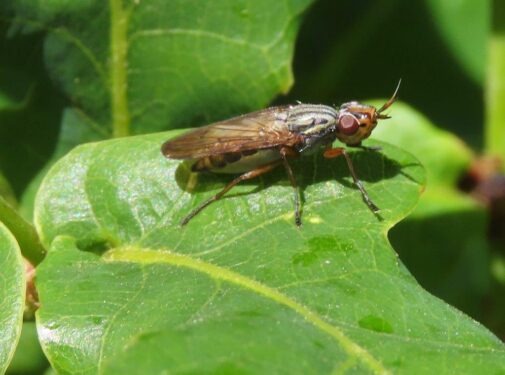

Other Flies
One of the larger and more impenetrable groups of insects, the true, two-winged flies (Diptera) are an identification challenge. For some groups, like the picture-wings above, and the hoverflies, however, there are comprehensive identification guides available, even if identification sometimes relies on microscopic detail visible only in dead specimens. Our ethical entomologist principles don’t permit us to kill them for study, so if it cannot be done in any other way, it remains unidentified.
No such problems with a hoverfly which we found to be abundant, especially on the Alexanders flowers around Wivenhoe, early on in lockdown. Look at those eyes! Only two (related) UK species have those spotty eyes: this one is Eristalinus aeneus, the more strictly coastal of the two.
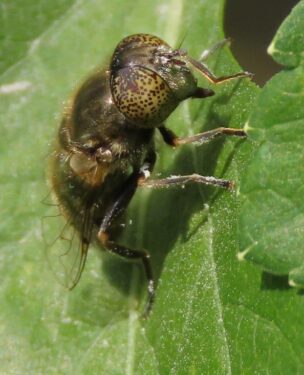

Similar to hoverflies, the thick-headed flies are often wasp-mimics, whose larvae live as internal parasites of bees and wasps. However the adults feed on nectar from Scabious among other species, hence our finding Conops quadrifasciatus around Lower Lodge, where, after a slow start (presumably due to drought), the Field Scabious has produced a field of scabious.
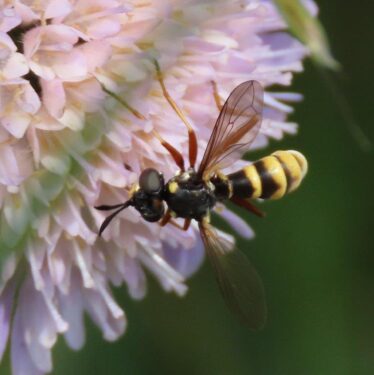

Some flies however do need specialist help, and we are grateful to Del Smith, Diptera Recorder for the Essex Field Club for confirming the next two. First is a dung-dweller Dryomyza anilis, which as the map shows is well scattered, but not previously recorded from Wrabness (and not yet on the map): fresh dog turds are an all-too-frequent substrate, but the smell presumably restricts biological recording activity.
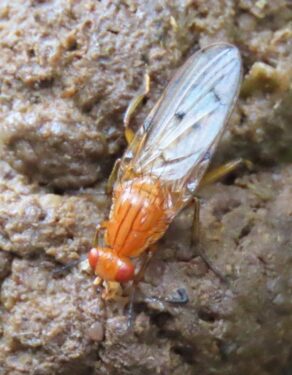

No such unsavoury habits and habitats for the final one, Neurigona quadrifasciata, one of the long-legged flies (Dolichopodidae). An evanescent little wood-nymph we found in Wivenhoe’s Old Cemetery, ours is one of just two records in the north of the county.
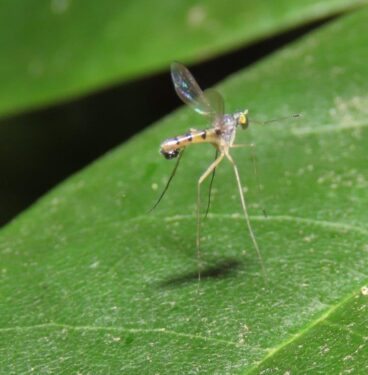

Bees and wasps
Always fraught with identification difficulties, an awful lot of unusual Hymenoptera are probably hiding out there in plain sight. But the rarest, another new arrival in these parts, Andrena florea is easily recognised by its red markings, its specific food requirements – once again White Bryony – and its distinctive near-vertical posture as it delves deeply into the flowers. Strongly south-eastern, this is is on the national Red Data list, and its stronghold has long been the East Thames Corridor. North Essex and south Suffolk records have started to appear in the past couple of years, but we had never previously spotted it here despite much time spent starting at White Bryony by the KGV: it is one of Jude’s favourite flowers!
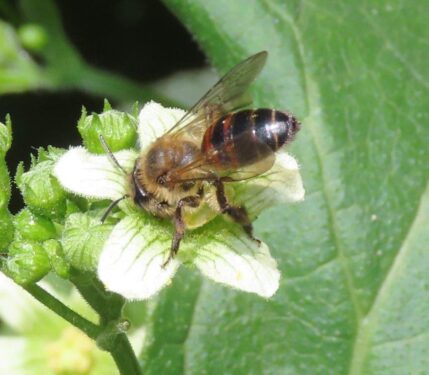

Another relatively recent arrival in these parts, which we saw first in 2019, is the Wool Carder-bee, sometimes very obvious as it defends woolly-leaved plants (such as Lamb’s-ears Stachys byzantina in gardens), from which it scrapes hairs to line its nests. By the Henrietta Close Recreation Ground, we came upon a thriving colony based around a patch of Black Horehound (below, left).
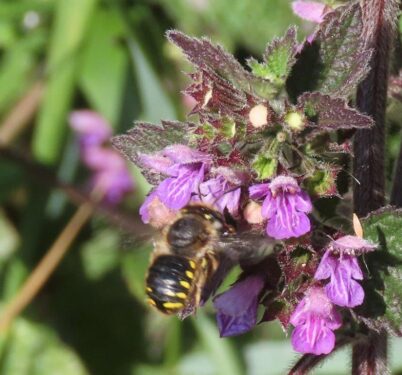
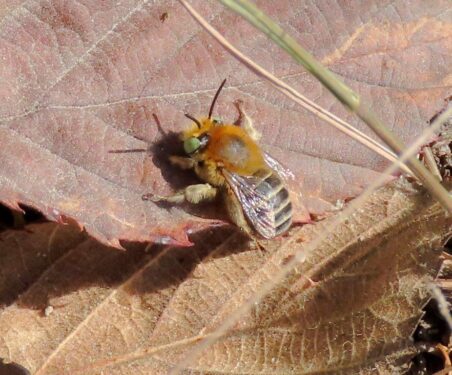
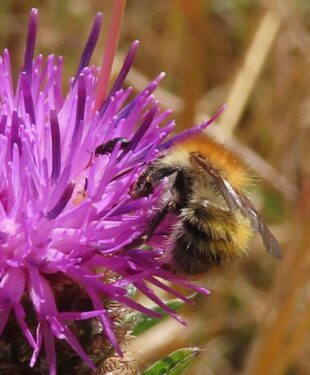
Green-eyed Flower-bee (above, centre) has been much more widespread than in previous years for us. Although not uncommon in Essex, the national map (from www.bwars.com) (below, left) shows how lucky we are to see it, being right at the northern extremity of its core distribution. Lucky to see such a lovely little furry bee, the males with striking green eyes, and to hear its distinctive, shrill buzz, often alerting us to its presence before it is spotted. This spring, we have located strong populations at Cockaynes Reserve, 41-Acres and the tiny Walter Radcliffe Road recreation area, at the latter site visiting Knapweeds in the thankfully unmown marginal strip. Those same flowers also supported several Moss Carder-bees (above, right), a declining, largely coastal bumblebee. seemingly almost, inexplicably. absent from the tidal Colne (below, right).


The rest of the Hymenoptera are equally, if not more, difficult to identify, but we were able to find and photograph the Red-banded Sand-wasp at Cockaynes, a species in Essex confined to the cost and remnant heathlands.


The final one is a sawfly, a group notoriously difficult to identify, not least because they lack any popular identification literature. Such a shame that, as they often have distinctive caterpillars, and the Elm Zig-zag Sawfly demonstrates this admirably: it does what it says on its name!
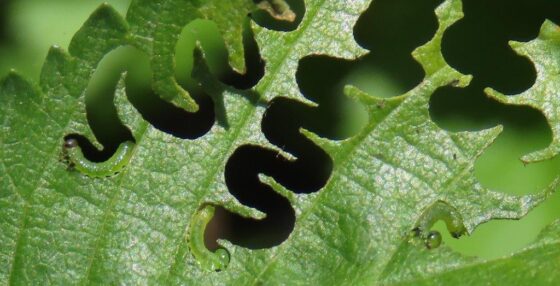

First recorded in the UK in 2017, this species does not (in common with sawflies generally) benefit from an Essex map. The national map (from species.nbnatlas.org) shows its current distribution extending from London in a swathe north-east to the north Norfolk coast, perhaps not in Essex at all. That is surely set to change, given its unmistakable nature: our record came from the delightful surrounds of the Alresford Old Church.
‘An inordinate fondness for beetles…’
God may have had that, hence creating so many, but he didn’t help us by making them easy to identify. And similarly, the Essex Field Club doesn’t help – Coleoptera is the one major insect order not mapped on their website. And it would seem that such records as there are are not getting onto the National Biodiversity Network, as maps of even common species show alarming amounts of white space where Essex is…
So below is a selection of those identifiable species we feel are most important locally, in that we haven’t seen them here before:
(L to R) Water Ladybird, Adonis Ladybird, Watercress Leaf-beetle
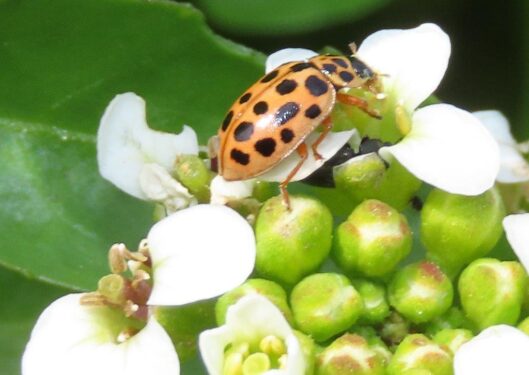
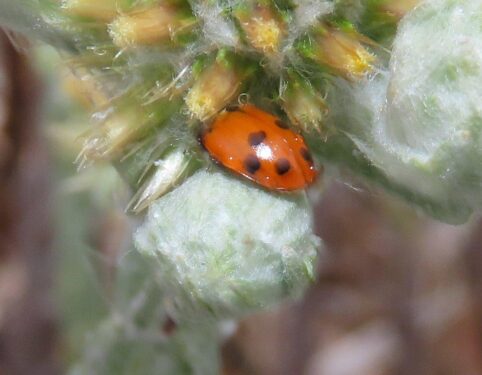
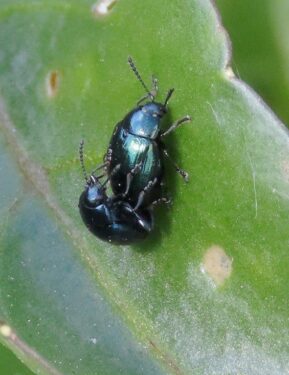
(L to R) A large rove-beetle Tasgius morsitans, and three weevils Rhinophyllus conicus, Liophloeus tessulatus and Orchestes signifer, the latter a tiny leaf-miner with a death mask we found in Lower Lodge.
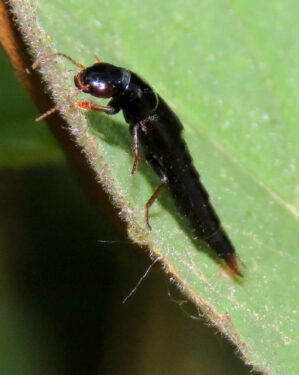
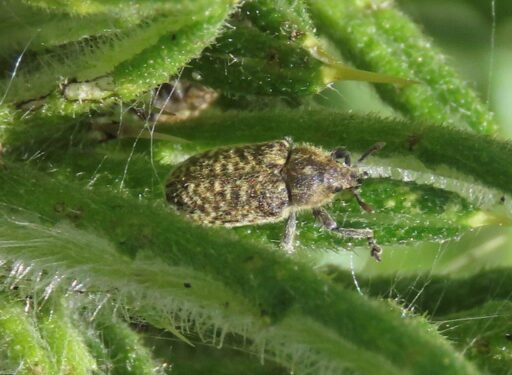
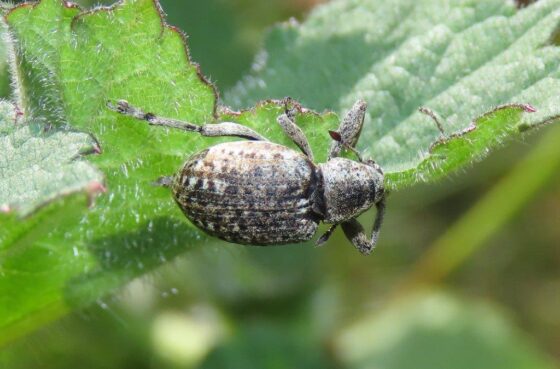
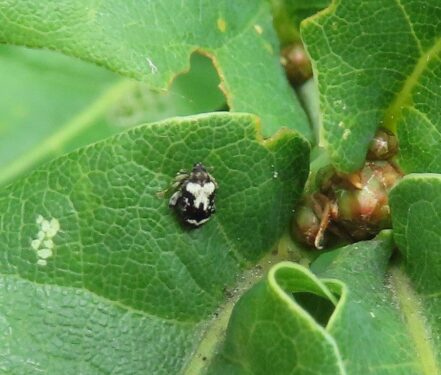
Lower Lodge was also the location for what may be our most significant record, the Welsh Chafer Hoplia philanthus. It seems to be missing from the national map from Essex, and a swathe westward, but in reality, who knows? Whatever, the photo shows clearly (albeit inadvertently) its clinching identification feature (thanks to Claudia Watts for pointing this out) – just a single tarsal claw.


True bugs
An increasing, spreading insect in southern Britain, first found in Essex in 2008, we have noticed the Box-bug around Wivenhoe for the past three years or so, as its food-plant range has extended, perhaps a result of climate change. This year, early May witnessed an unprecedented emergence here, seen in many a place around town, including numerous individuals on Yew in the churchyard.


The Blue Shield-bug is generally considered widespread in Britain, but the one we found around the Wivenhoe Gravel Pits was actually our first. And it is NOT easily missed, a shining blue-green jewel of a creature. And actually, as so often, the map shows only a small handful of sites in the north-east of Essex.
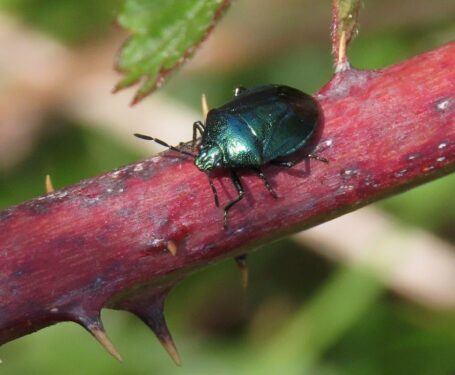

Another increasing bug is Closterotomus trivialis, an arrival from southern Europe to London first in 2008. We initially found it in the Beth Chatto Gardens last year, and it was present there in force when the gardens reopened in June. Embarrassingly, we neglected to submit the record in 2019, and so the only locality shown on the map is around Harlow. We suspect in truth it is much more widespread – part of its incognito nature may be that it isn’t currently featured on the otherwise excellent British Bugs website gallery www.britishbugs.org.uk.
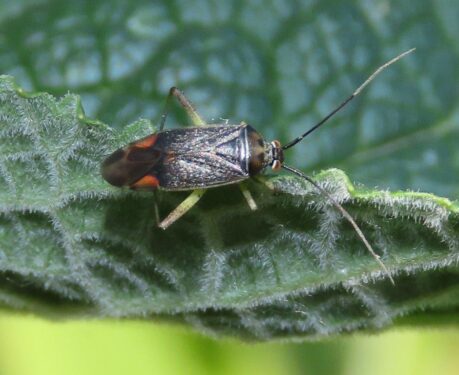

Another new arrival (or recolonist) in Britain is Stictopleurus punctatonervosus. In Essex it is primarily an insect of thistles in the East Thames Corridor, and we have not yet found it around Wivenhoe. However, we did come across it in rough grassland in Little Maplestead, a part of the county in which records are few and far between.
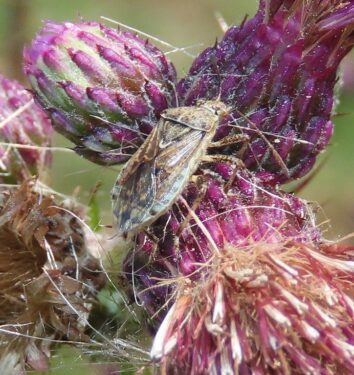

Finally, to the hompteran bugs (aphids, planthoppers, froghoppers and the like). One of the more readily identifiable is the Bracken Planthopper, restricted to that foodplant and very distinctive in appearance. As Bracken is the most widely-distributed plant in the world, the bug should perhaps be found everywhere. However, the map suggests otherwise. Three of the four sites we recorded it in lockdown (Wivenhoe Wood, 41 Acres and Cockaynes) are close to one of the spots on the map, but the other (Wrabness Nature Reserve) is a significant range extension.
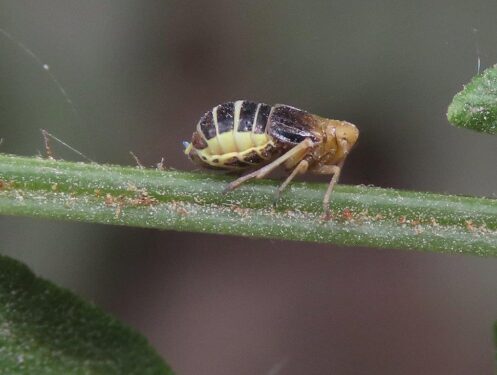

Grasshoppers and their relatives
The early summer period neatly avoids the time when grasshoppers and bush-crickets are adult in the UK, but fortunately for our lockdown surveys, the nymphs are generally present from April and readily identifiable.

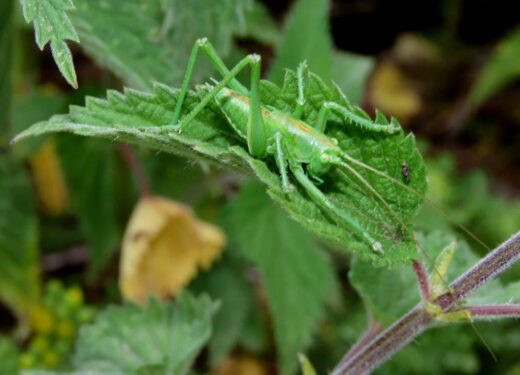

Once almost entirely restricted to the immediate coastal fringes, especially sea walls, of Essex and Kent, Roesel’s Bush-cricket (above, left) has expanded its range over the past 30 years to occupy almost the whole of England. However, Great-green Bush-cricket (above, centre) has not followed in its footsteps. Inexplicably missing from the middle and upper reaches of the Colne, apart from one small area of East Donyland, we found this nymph at its ‘traditional’ site of Wrabness Nature Reserve.
But there is a small group of little-known, rather secretive grasshopper-relatives, the groundhoppers, which can be found as adults throughout the season. And we found both of the Essex species, Common Groundhopper (below, left) from Cockaynes and Slender Groundhopper (below, right) from 41 Acres.
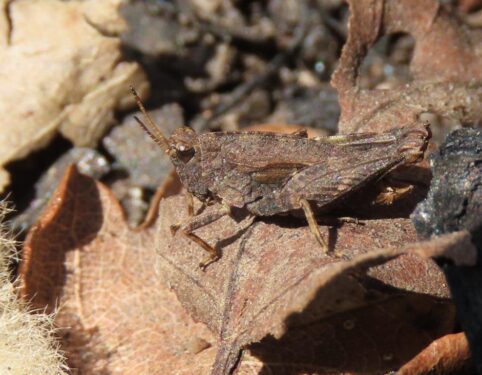
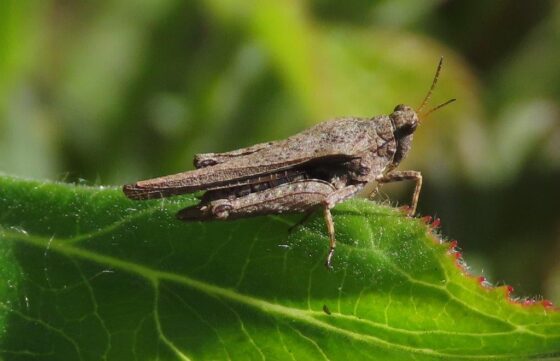
Both species are widespread across Essex, the Slender being especially associated with valleys and damp grassland.
Odds and Ends
Just a few of the more exciting creatures we found were invertebrates, but not insects, while others were insects, but we didn’t see the insects themselves, just their galls, the distinctive growths they cause when they attack specific plants.
Spiders are now much easier to identify than before, given the new WILDGuides book on Britain’s Spiders. However, a small jumping-spider with distinctive, enlarged front legs in Villa Wood, Cockaynes Reserve, did require national expert Peter Harvey to confirm its identity as Ballus chalybeius. Nationally Scarce, this is strongly south-eastern in core distribution, and we are pretty much at the northern end of its main range.
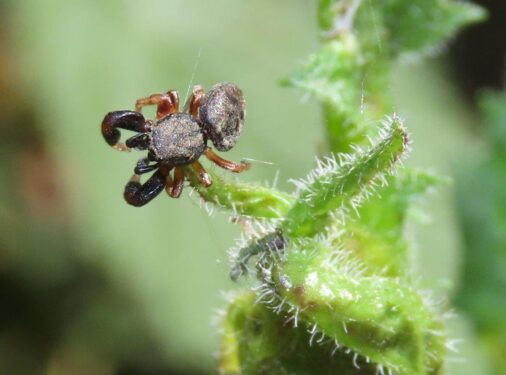

Slugs and snails are not one of our main areas of interest, but three hours after a major thunderstorm in Stour Wood, Wrabness, we became aware of lots of small slugs crawling over the tree trunks. We identified them as Tree Slugs Lehmannia marginata, and much to our surprise, the map shows a rather sparse distribution in Essex, the eastern outlier of which is actually Stour Wood.
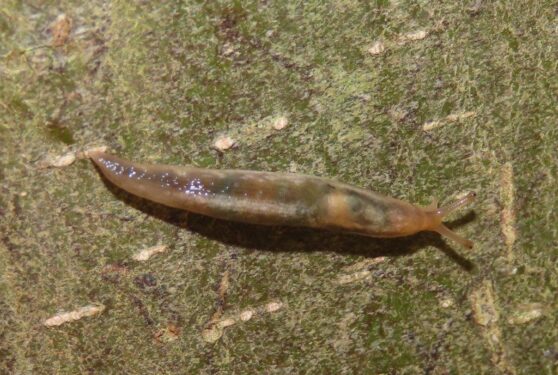

As far as galls are concerned, the two which we found for the first time (for us) are both relatively recent invaders to the UK, and probably scarce in the county, although maps are not available to confirm that. On the edge of Ferry Marsh, a small twisted, gall-ridden tree (at least half a dozen species of gall-causer on it) in March revealed the Barnacle Galls of Andricus sieboldii (below, left) (thanks to Jerry Bowdrey, Essex Field Club Gall Recorder for identification), and Turkey Oaks on the University campus in June were covered in the (hard) currant-like galls of Andricus grossulariae (below, right), one that was first found in Britain as recently as 2000.

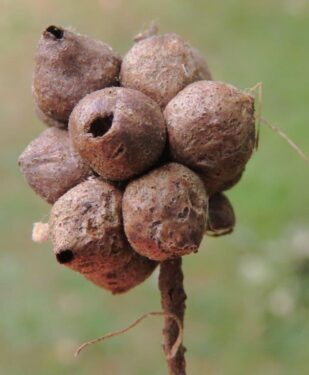
Both gall-causers are minute gall-wasps, almost impossible to tell apart if one sees the wasps, but their distinctive galls are proof positive, beyond doubt.
And finally …. Moths & Butterflies
Moth-trapping has been largely out of the question, but we have been enjoying the early-season day-flying macromoth species, four of which are rather sparsely distributed in Essex, but have accompanied many a walk of ours.
(L to R) Speckled Yellow (Cockaynes), Mother Shipton (Lower Lodge), Small Yellow Underwing (Lower Lodge and Barrier Marsh) and Burnet Companion (Cockaynes and Barrier Marsh)
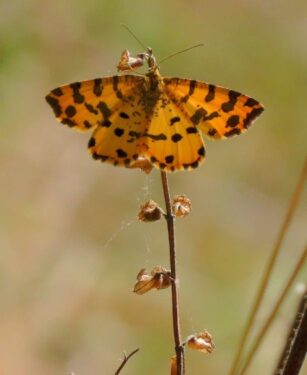
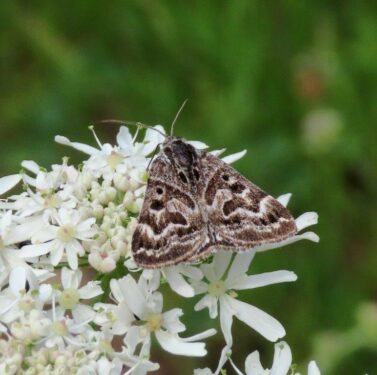
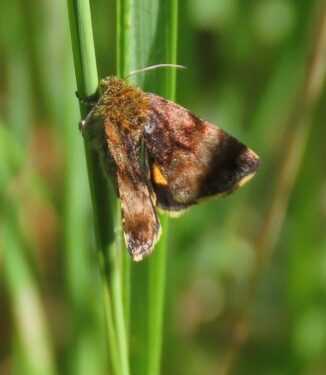
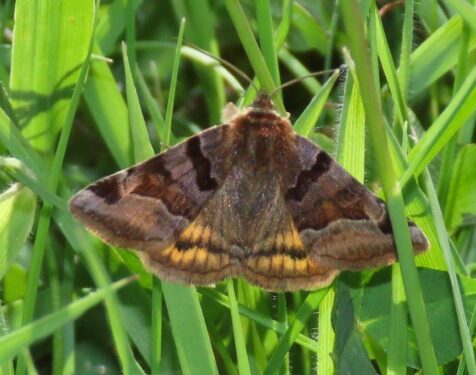
Many micromoths, despite their usually small size, are as attractive as the larger species, and often also of considerable interest by virtue of their localised distributions. Three we have noted specifically are shown below.
We have known the Brassy Longhorn Nemophora metallica around Lower Lodge for some three years, although this location has not yet made it onto the map which shows just two other Essex sites. It is dependent upon Scabious, itself rather infrequent in our grassland-impoversished county, and once the Scabious bloomed after the early season drought, the moth was more abundant than ever.
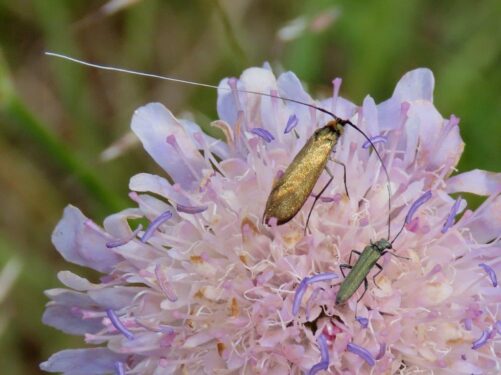

Also around Lower Lodge, Hogweed umbels proved a good spot to look for the beautiful tortrix moth Pammene aurana. Although regarded as common, the map probably reflects its true status as it is easy to spot and identify: ours, not yet on the map, is only the second recorded site in north-east Essex.
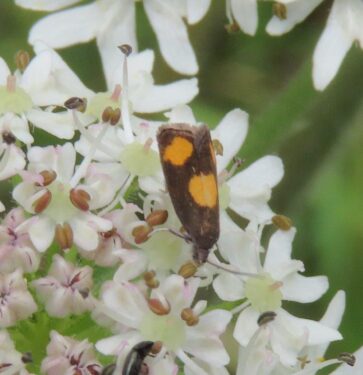

Another beautiful and distinctive micro is Dasycera olivella, which ‘regales’ under the uninspiring English name of Scarce Forest Tubic. Nationally Scarce, this is found sporadically across (mainly) south-east England, and we have found it in previous years around Wivenhoe. But this year, we did come across it only further inland, around Little Maplestead, actually away from its previously known range in the coastal half of the county.
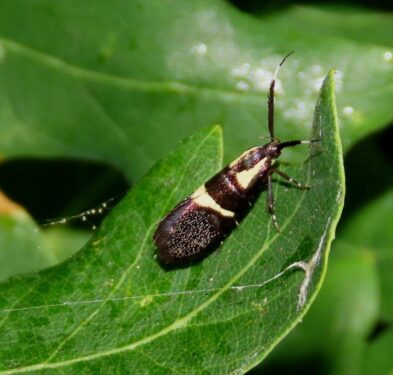

And so to the butterflies. When I started working in Essex 30 years ago, charismatic woodland butterflies were almost a distant memory, apart from White Admirals just clinging on in Stour Wood. For some unknown reason, possibly linked to climate change, that all changed about 15 years ago, and White Admirals are now to be found throughout the wooded parts of the county. Then around 10 years ago, Silver-washed Fritillaries followed suit, and within the past five years, the most impressive of all, Purple Emperor, has continued the trend. Towards the end of June we marked the end of tight lockdown by visiting Stour Wood, where the Admirals and Fritillaries were, as expected, in full force, and we were thrilled to see a female Emperor as well, apparently (we learned later) the first re-colonist of this wood. Just a pity we didn’t see the male reported and photographed the same day by a friend of ours!
